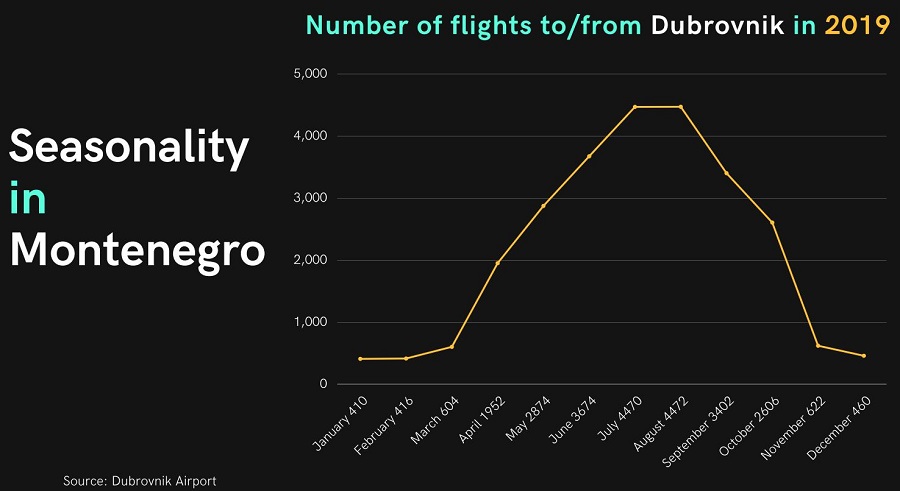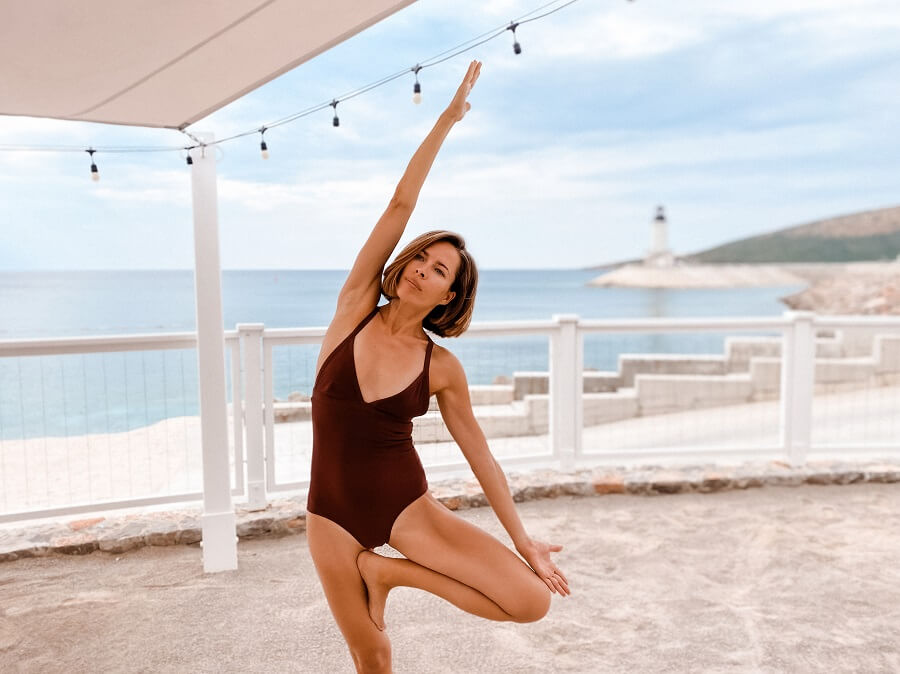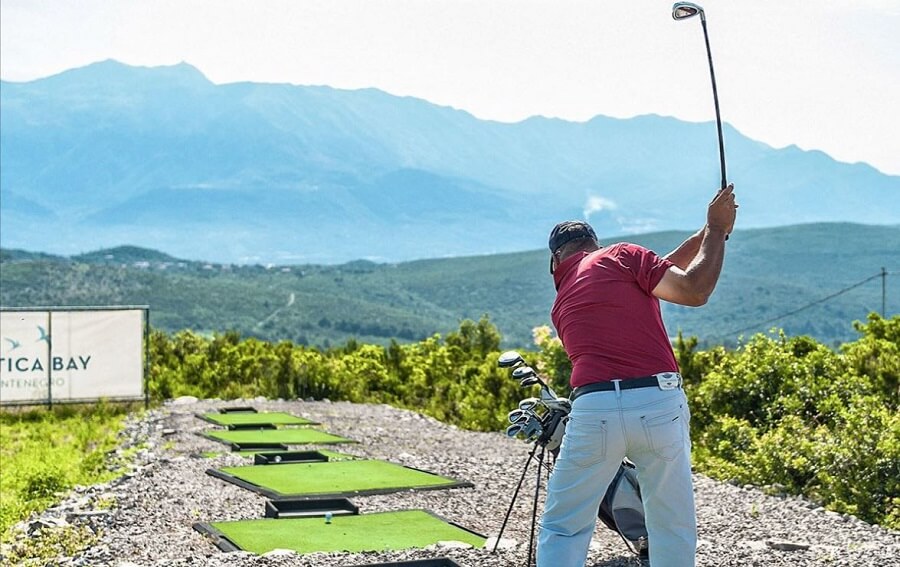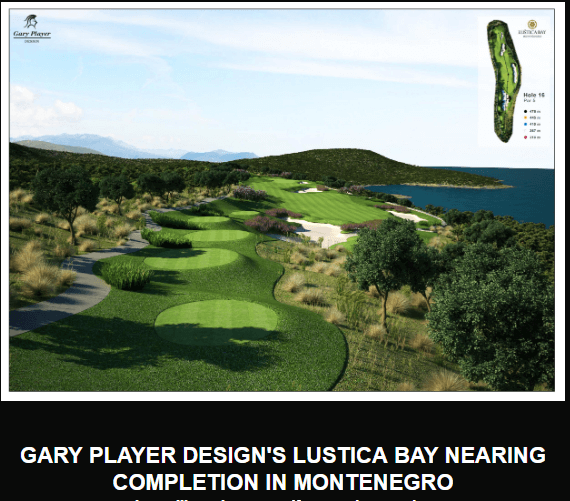Lekcije iz Crne Gore: divlja ljepota i "staro normalno" u Chedi Luštica Bayu
13. studeni 2020 – A što učiniti kada zrakoplovi prestanu letjeti i tradicionalna turistička tržišta presuše? Inovativna promjena fokusa u hotelu Chedi Luštica Bay, te neke lekcije iz Crne Gore o tome kako promijeniti turizam.
"Luksuz različitim ljudima znači različite stvari”, nedavno mi je rekao prijatelj. “Meni trenutačno luksuz označava prirodu, prostor, svjež zrak i aktivnosti na otvorenom".
Stvari koje smo nekad uzimali zdravo za gotovo, kasnije sam pomislio – posebno oni među nama koji smo morali izdržati tjedne zatvoreni u urbanim sredinama ranije ove godine (a u nekim slučajevima, još jednom ove zime). COVID-19 čini se da ne razlikuje svoje žrtve prema njihovoj važnosti, budući da je dohvatio najuglednije stanovnike Downing Streeta i Bijele kuće, da navedem samo dvojicu. Priroda, svjež zrak, prostor, privatnost – prigoda da se odahne i vrati staroj normalnosti. To zaista jest luksuz, složio sam se, dok sam vraćao masku na lice ulazeći u zagrebački aerodrom.
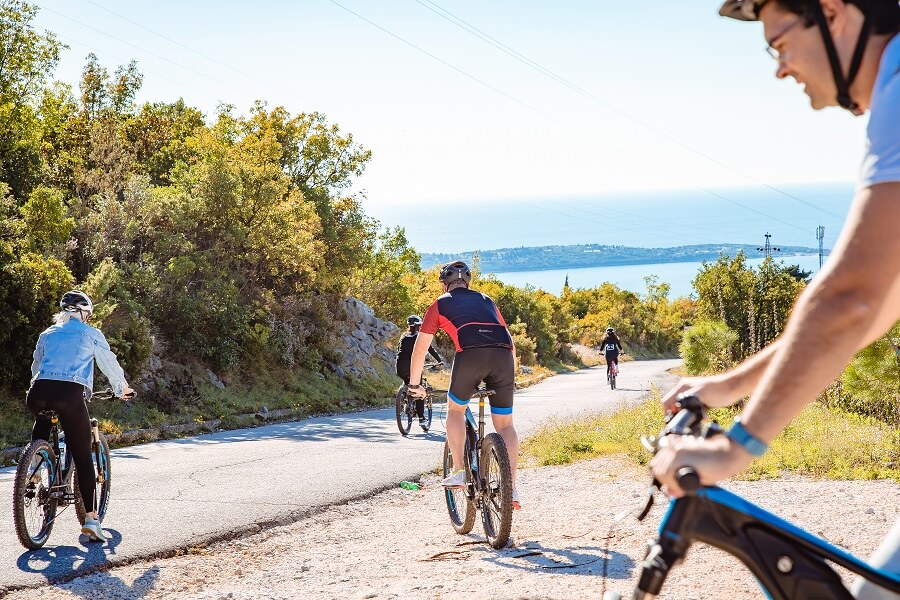
Bio sam na putu u Crnu Goru, gdje sam trebao odsjesti u Chedi Luštica Bay hotelu, gdje sam iz prve ruke otkrio kako trenutačno plove kroz nemirne vode hotelske industrije. Htjeli su mi pokazati kako se prilagođavaju značajnim izazovima nove stvarnosti. Vrijeme je spektakularno, obećali su mi, a vožnja quad bikeovima po poluotoku trebala mi je biti vrhunac ove godine. Dok sam gledao kroz prozor u još jedno kišno i sivo poslijepodne u Varaždinu, nije me trebalo mnogo nagovarati, pa smo isplanirali da odem na tri noći, letom do Dubrovnika.
Vjerni pratitelji TCN-a možda se sjećaju članka koji sam napisao nakon prve posjete Luštici, u veljači 2018. Tada sam bio šokiran da se takav projekt uopće može pokrenuti na Balkanu, nakon što sam godinama gledao kako velike investicije u Hrvatskoj zapinju na papirologiji, birokraciji i korupciji. A ovdje, samo preko granice, vizionarski investitori sa švicarskom adresom ulažu 1,1 milijardu eura da bi razvili vrhunsku nekretninu. Površina od 7 milijuna kvadratnih metara na poluotoku Luštica postaje mjesto gdje će nastati 7 luksuznih hotela, novo selo za 2.500 ljudi, dvije marine i golf teren s 18 rupa. Na projektu je sudjelovala i crnogorska vlada i napredovao je silnom brzinom. Ključno je bilo da je, s obzirom na veličinu terena o kojoj se radilo, investitor imao potpunu kontrolu nad dizajnom prostora. Ako je želio stvoriti iskustvo koje se temeljilo na miru, ljepoti, prirodi i životu bez stresa, nije bilo susjeda s kojima je trebao pregovarati.
I upravo se to dogodilo u zaljevu Luštica
To me je iskustvo dovelo do pisanja jednog od najdiskutiranijih članaka na TCN-u (razgovaralo se o njemu čak i na razinama ministara, kako u Hrvatskoj, tako i u Crnoj Gori) nakon te prve posjete Lessons from Montenegro: Why Luxury Lustica Bay Will Never Happen in Croatia.
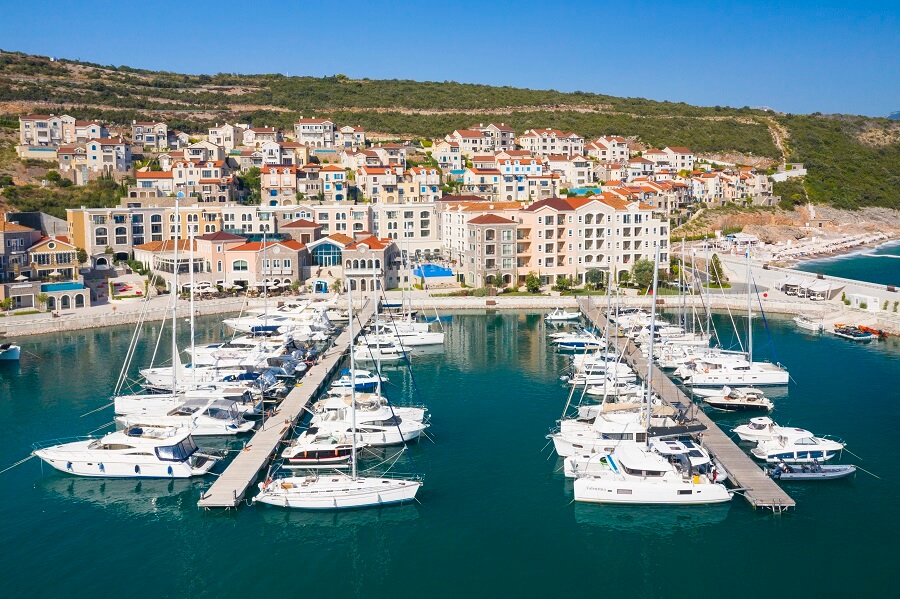
Tijekom moje prve posjete Luštici sada pred već gotovo tri godine, došao sam na gradilište, i sjećam se da sam se nasmijao kada su mi rekli da će luksuzni Chedi Luštica Bay biti otvoren u srpnju te godine, posebno kad sam se sjetio mojih iskustava sa sličnim projektima u Hrvatskoj. Ali zaista je bio otvoren u srpnju, a napredak koji se vidi od tada više je nego impresivan, unatoč kočnicama koje je sa sobom donijelo doba korone.
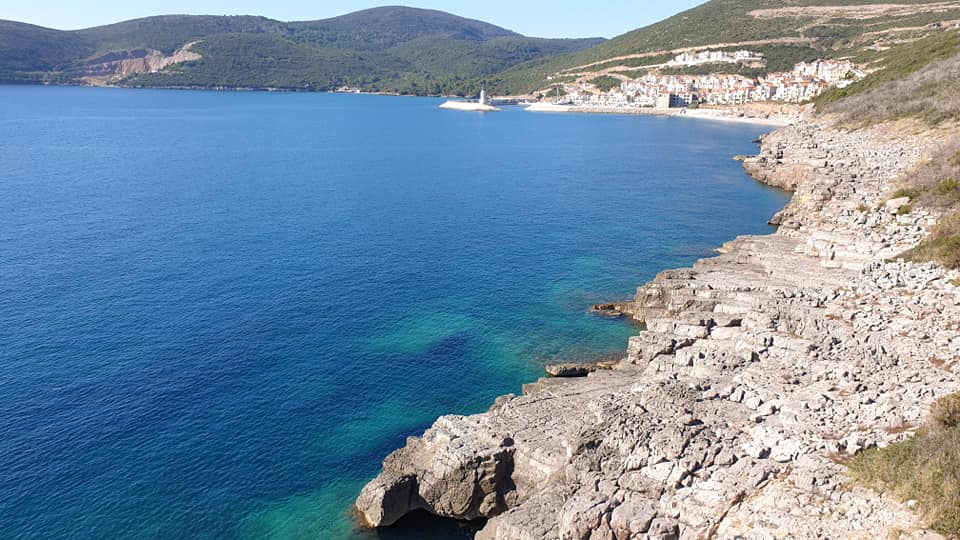
Da budem iskren, kada su mi se javili iz hotela začudio sam se što je Chedi Luštica Bay uopće otvoren sredinom studenog, posebno ove lude godine koja je uništila turizam diljem svijeta.
Jedan od izazova turizma kako u Hrvatskoj a tako i u Crnoj Gori je ovisnost o vremenskom dobu. Ovaj graf dubrovačkog aerodroma, preko kojeg u Lušticu dolazi najviše gostiju, daje sjajne naznake te ovisnosti o sezoni. A ovo je statistika za 2019., koja je bila normalna godina.
Razumljivo je da dolasci turista ovise o frekvenciji letova. Kada nema letova nema niti dolazaka s tradicionalnih turističkih tržišta. Samo pitajte Dubrovnik: dok je većina ostatka Hrvatske imala koristi od smanjenog broja letova, jer je većina gostiju iz susjednih država bila prisiljena odabrati destinaciju do koje može autom, Dubrovnik je ostao bez priljeva turista i u prvih šest mjeseci ove godine ostvario je samo 12% dolazaka iz 2019.
Situacija je bila još gora u Crnoj Gori. Kako još nisu član Europske unije, neka od njihovih najvažnijih tržišta praktično su nestala za ovu godinu kada je Crna Gora uklonjena s liste sigurnih zemalja Europske unije. Obavezna 14-dnevna samoizolacija pri povratku učinila je godišnji odmor u Crnoj Gori nezanimljivim za sve osim za najzagriženije ljubitelje. U 2019. godini, 49% turista u Crnu Goru došlo je iz Njemačke, Rusije i Velike Britanije – sva su ta tržišta ove godine praktično bila nepostojeća! Posjetitelji iz regije prošle su godine činili samo 9% turističkih dolazaka.
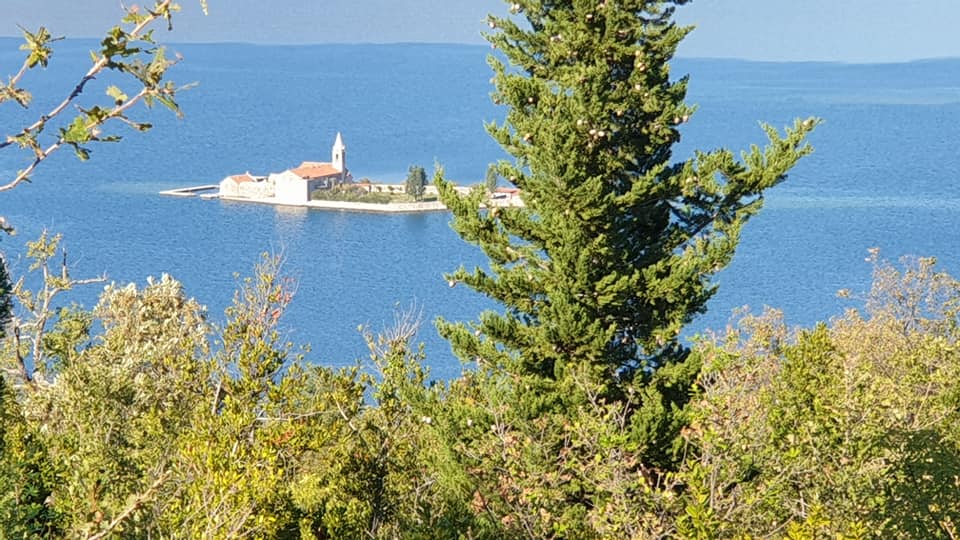
Ali gosti iz regije imaju jednu jednu veliku prednost za one koji se bave turizmom, a koji su ih željni potražiti: oni mogu doći autom. I dok prosječni turist iz regije vjerojatno nema onoliko sredstava za potrošiti kao što imaju Britanci, Nijemci ili Rusi, ipak postoji značajan broj bogatih ljudi u zemljama poput Srbije, Hrvatske, Bosne i Hercegovine, Kosova, Sjeverne Makedonije i Albanije. Oni su također možda planirali odletjeti nekamo izvan regije, a izostanak letova znači da su sad oni postali ciljano tržište. To posebno vrijedi u zimskim mjesecima, kada je lokalni turizam tradicionalno nepostojeći. Mnoge turističke tvrtke zimske mjesece na Jadranu provode zatvorene. To je doba godine kada se vlasnici odmaraju nakon duge i uspješne sezone, te i oni često odlete nekamo na produžen zasluženi odmor. Kako ni ove zime neće baš biti mnogo letova, postoji tržište za one koji imaju što ponuditi.
I rezultati su bili impresivni. Bilo je jasno da će turističke brojke za ovu godinu biti smanjene, ali posjetitelji iz regije ove su godine premašili 80% svih dolazaka (u odnosu na 9% lani), a prognoza za 2021, kako se stvari budu vraćale u normalu, je da će tada činiti 60%.
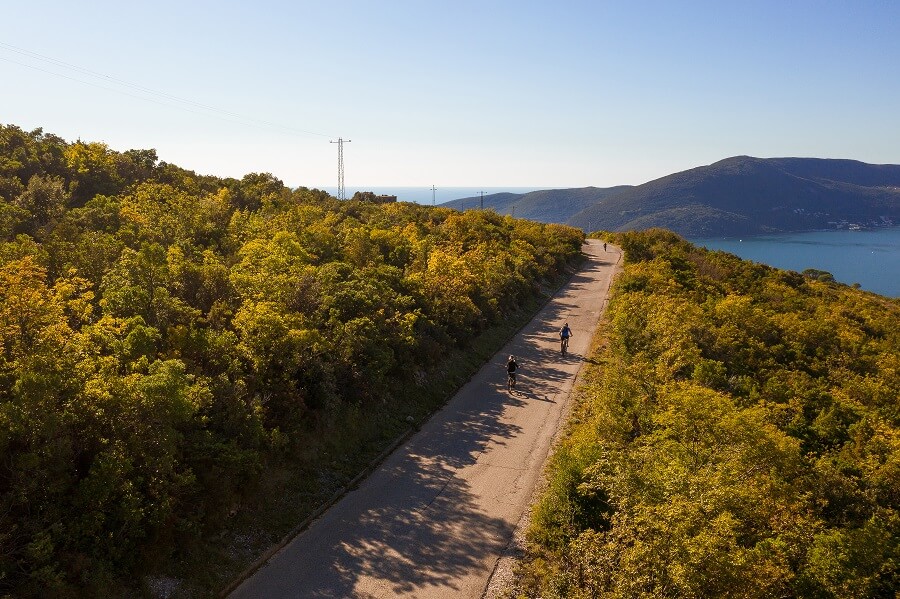
A kako sam otkrio pri svojoj posljednjoj posjeti Chedi Luštica Bayu, nude mnoštvo toga, dok se u pozadini nalazi netaknuta priroda, svjež zrak, prostor i privatnost. Luksuz, kako bi to nazvao moj prijatelj s početka članka.
Pa što to Chedi radi drukčije, da može biti otvoren cijelu godinu, dok mnogi hoteli u Dubrovniku 2020. uopće nisu otvorili svoja vrata?
Dva su ključa za njihov relativni uspjeh: fantastično avanturističko igralište koje nema susjeda, te management team koji se ne boji istraživati novosti i širiti poslovanje.
Često se govori o tome kako je obala Crne Gore preizgrađena i njena ljepota time kompromitirana. I dok je to nedvojbeno istina u nekim mjestima (naprimjer, u Budvi i u Herceg Novom), ništa ne može biti dalje od istine na poluotoku Luštica. On je zaista mjehurić pozitivne energije i neukaljane ljepote na svim stranama, posve drukčiji od svega drugog što sam susreo na crnogorskoj obali. A na obilasku na quad vozilima sam otkrio i da je mjesto pritajeno bogate (i iznimno zdrave) turističke ponude.
Kada sam prvi put posjetio Chedi Lustica Bay, početkom 2018., još je bila u izgradnji. Moj dojam je bio da se radi o izvrsnom projektu, ali da je malo daleko od ostatka turističke akcije
Tek sam sada počeo u potpunosti cijeniti magiju doživljaja zaljeva Luštica, sada kada je više toga izgrađeno i kada stvari počinju sjedati na svoje mjesto. Ne radi se samo o hotelu, tih 7 milijuna kvadrata pružaju cjelokupno iskustvo Luštice, koje je moguće među najboljim takvim luksuznim iskustvima prostora, prirode, ljepote i svježeg zraka u Europi danas.
Koristeći hotel kao bazu, možete iskoristiti prilike koje oduzimaju dah za bicikliranje po cestama na kojima nećete sresti nikoga.
Ili za jogu uz vodu, opuštajući način da započnete dan.
Gary Player teren za golf s 18 rupa još nije otvoren, ali je driving range uređen i otvoren i vrlo popularan u većem dijelu godine (zatvara se 15. studenog).
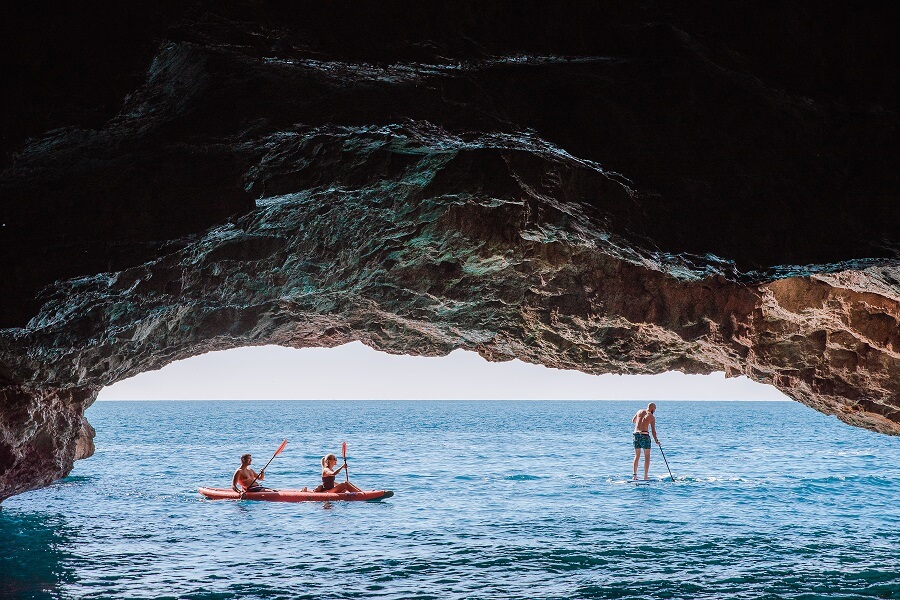
Na plaži je bilo ponešto ljudi, neki su se čak i kupali usred studenog, a kajaci i SUP-ovi su bili raspoloživi za uporabu.
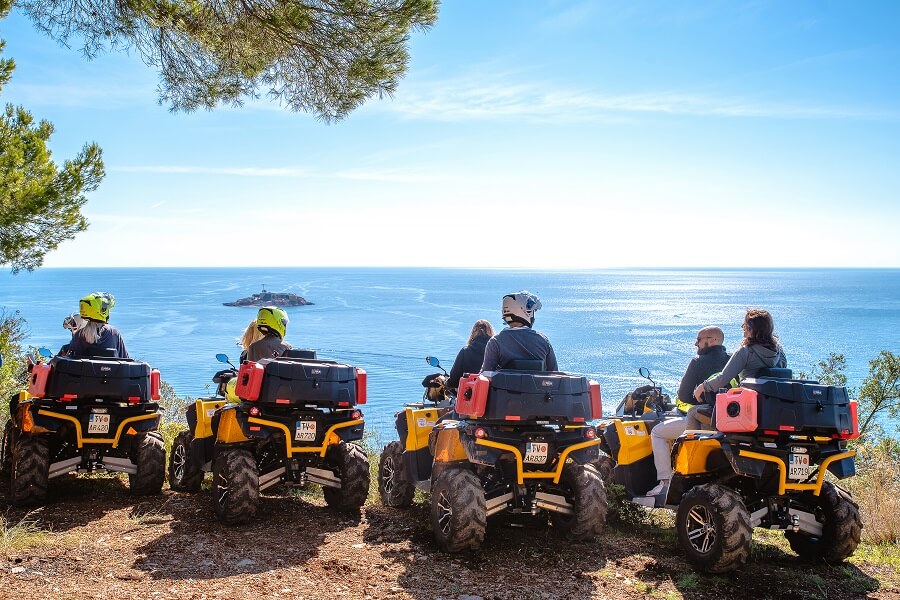
Očekuje vas cijela flota quadova i e-bicikala, koje možete unajmiti s ili bez vodiča. Vodič uz quad se svakako isplati.
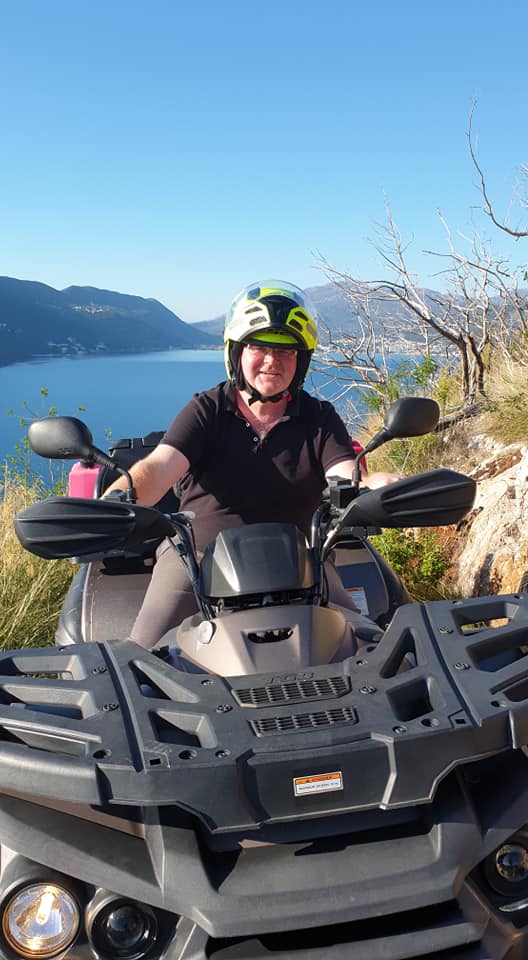
Moram priznati da sam bio malo nervozan oko te vožnje na quadu, jer mi je to bilo prvi put, ali su me sjajni (iako pomalo ludi) vodiči iz Chedija uvjerili da će to biti obilazak za pamćenje.
Nisu bili u krivu.
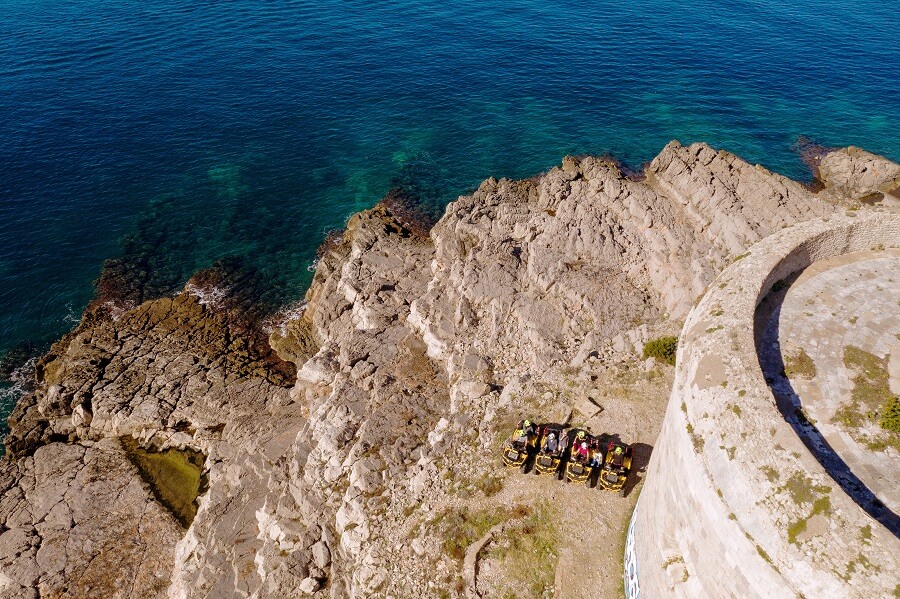
Kakav sjajan način za istražiti poluotok, brzinom i razinom interesa kojom želite!
Bilo koja ideja kako bi ovo mogla biti nježna vožnja po glavnim putevima brzo se raspršila čim smo sišli offroad, a stajali smo samo da bismo s puta micali prepreke (pogledajte video gore).
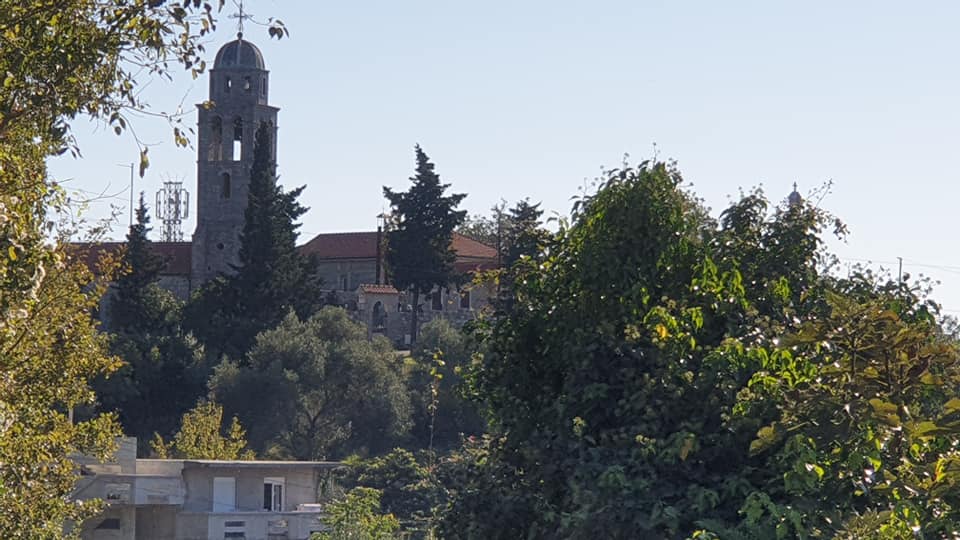
Bilo je vremena i za diviti se mnogim prelijepim crkvama koje se nalaze u selima Luštice.
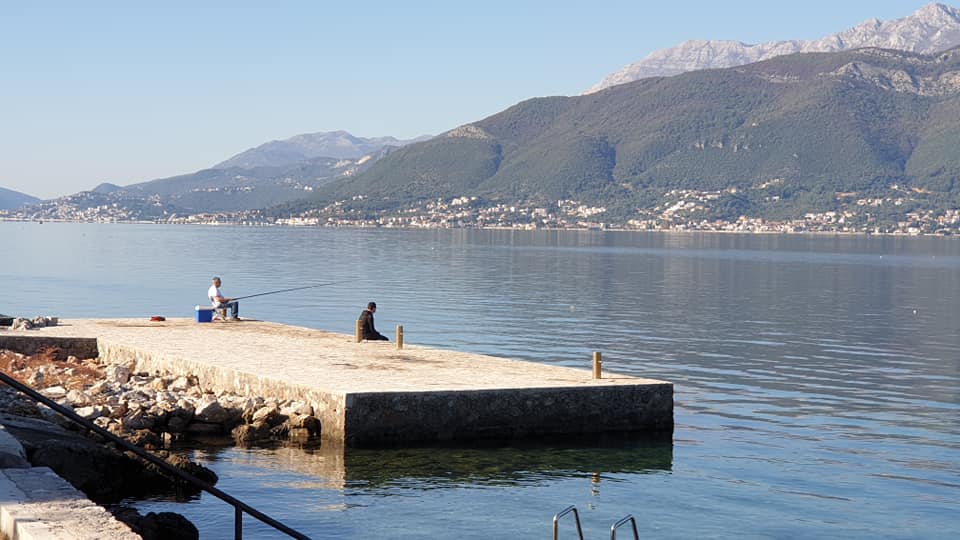
Prilika za uočiti opušteni lokalni način života – Crna Gora u jesen, na prekrasno kasno jutro u studenom.
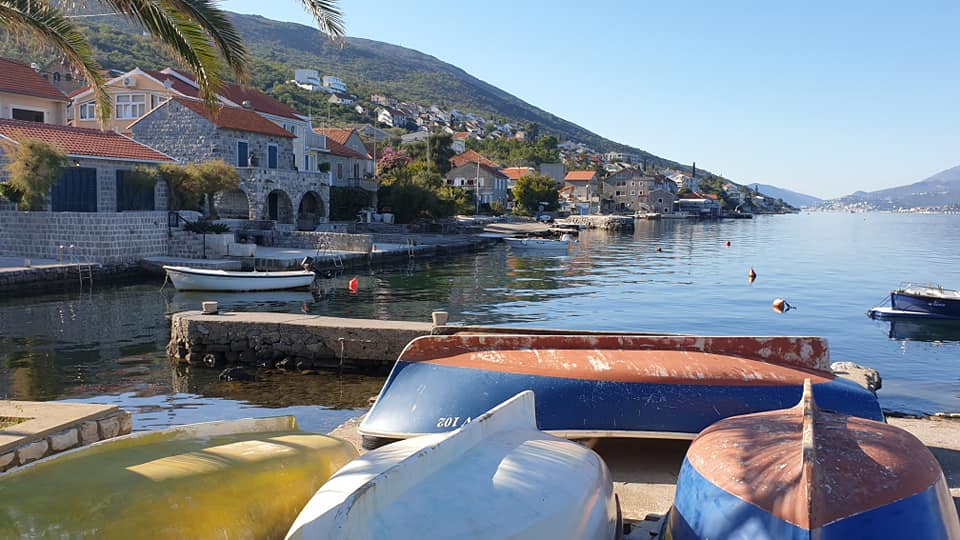
Vožnja kroz tradicionalna sela na obali, oazu mirnoće.
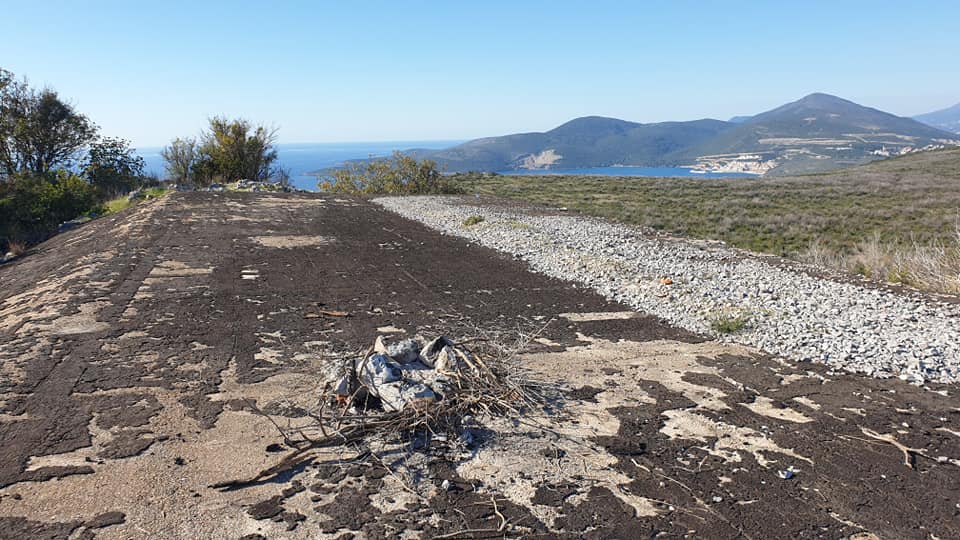
Naš vodič Milan domaći je iz Luštice, strastven zaljubljen u svoj poluotok. Odveo nas je na neka od svojih omiljenih mjesta, gdje ide na planinarenje s prijateljima, daleko od gužve, gdje uživaju u roštiljanju u prirodi, kao što je ovo mjesto uz jednu od 85 utvrda bokeljske regije, koje su izgrađene za vrijeme Austro-Ugarske.
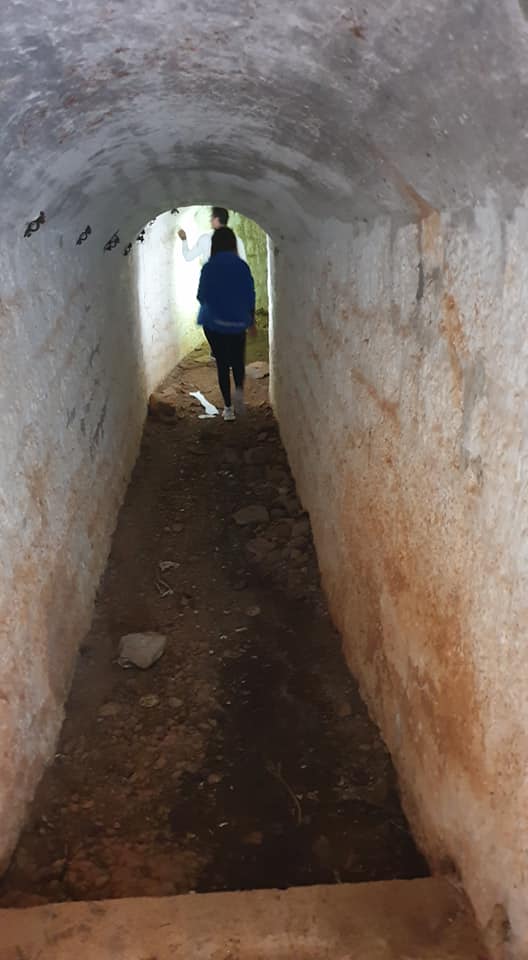
Utvrde imaju i svoje tajne, pa nas je Milan proveo kroz 400 metara dugačak tunel ispod utvrde na Grabovcu.
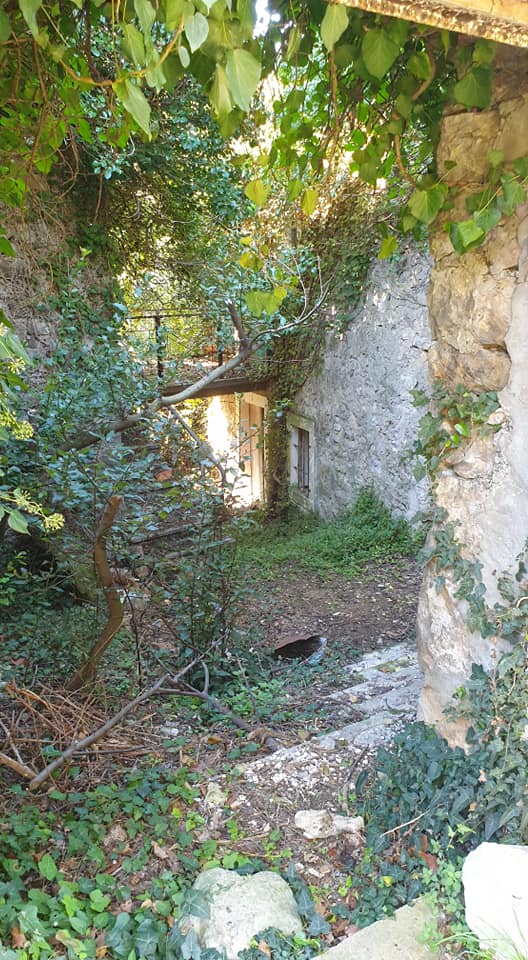
Kako je osjetio da nam se zaista svidio ovaj obilazak, Milan nas je odveo još dublje u svoj svijet, pokazujući nam simpatična kamena sela, u kojima su nažalost mnoge kuće u jako lošem stanju.
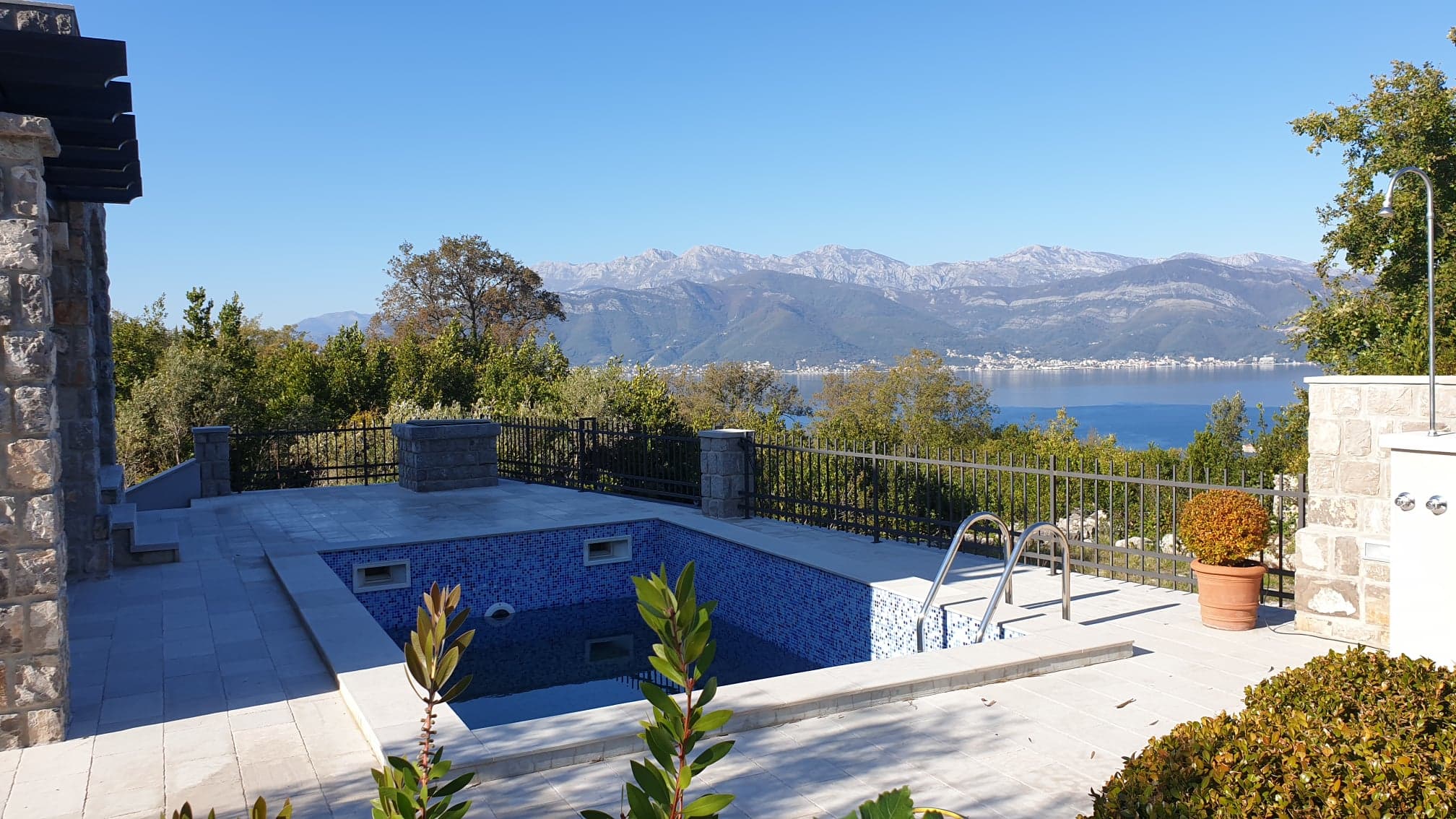
A druge su prekrasno uređene i nude fantastičan pogled, okružene prirodom i bez drugih ljudi u blizini.
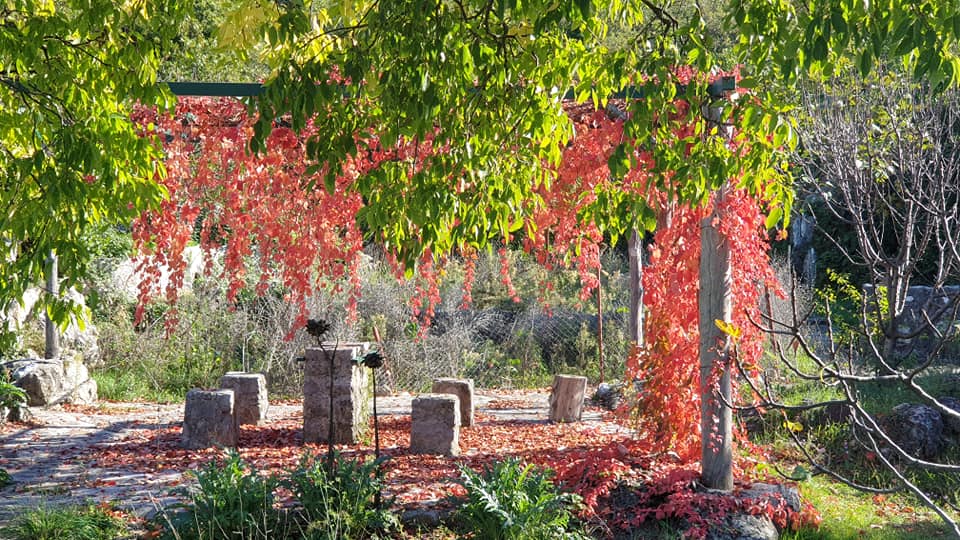
Boje Luštice u jesen.
Divlja ljepota i staro normalno. Nakon što sam mjesecima bio u stresu i pisao o pandemiji, učinilo mi se da sam pronašao mjehurić prirodne svježine koji je podsjećao na život kakav je nekad bio.
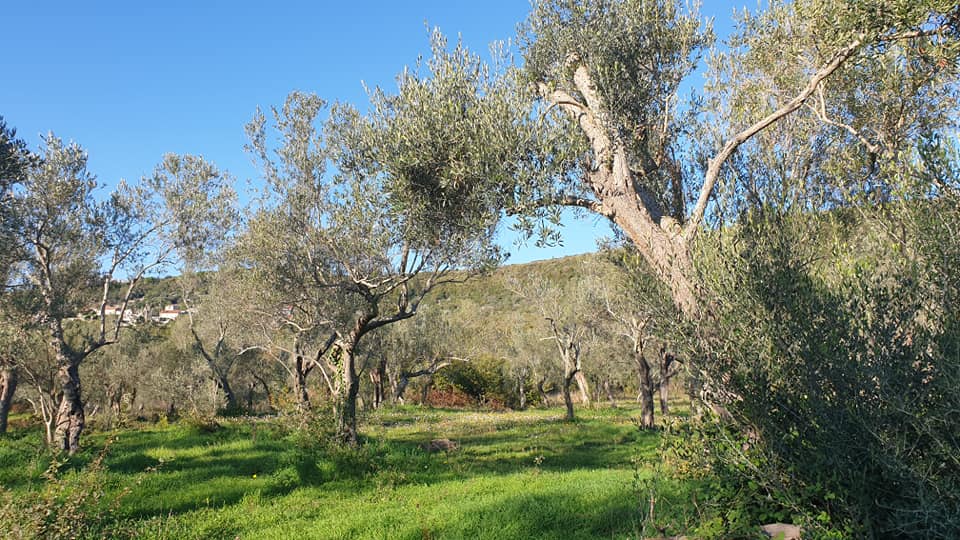
Nastavili smo voziti kroz polja i uz maslinike iz kojih nastaje fantastično crnogorsko maslinovo ulje. Ako imate vremena i želje, postoji mogućnost da uživate i u kušanju maslinovih ulja obitelji Morić u njihovom masliniku, kao i senzacionalnih lokalnih sireva koje proizvodi Ruskinja koja se prije 9 godina doselila na poluotok.
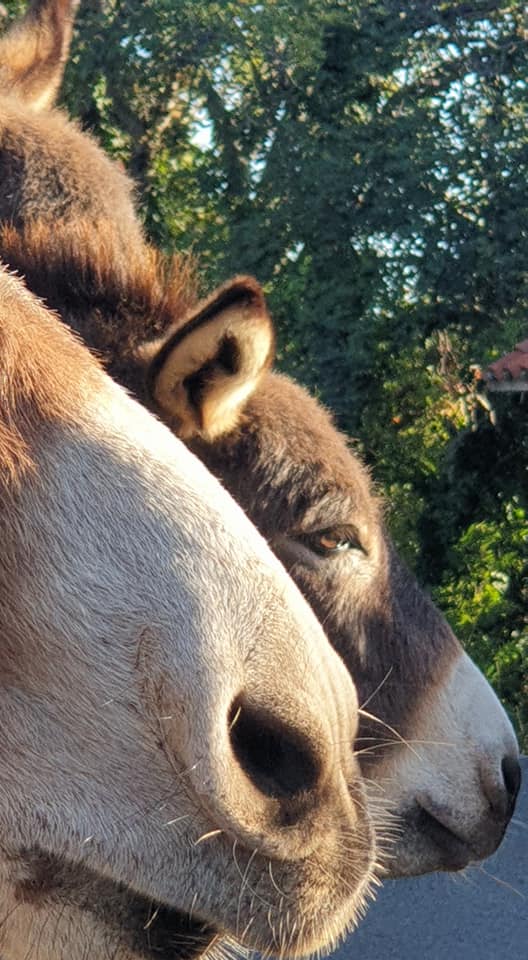
Možete malo i hraniti magarce.
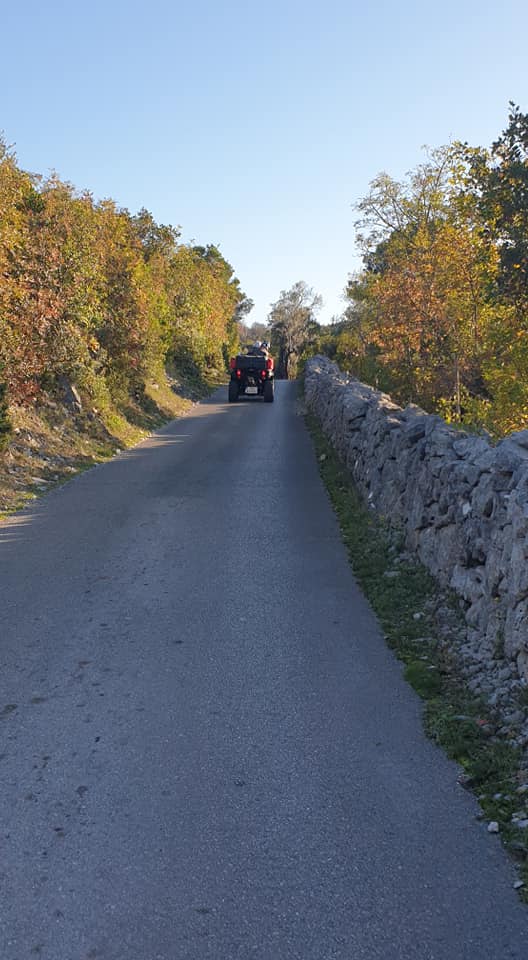
A svugdje kameni zidovi slijede ceste.

Austro-Ugarski utjecaj je snažan u regiji Boke, i ne samo zbog mnoštva utvrda. Kako su bili majstori infrastrukture, čini se da su bili daleko ispred svoga vremena pa da su oni čak postavili i temelje za puteve za današnja quad vozila, prije više od stoljeća. No, sad smo išli potpuno off-road.
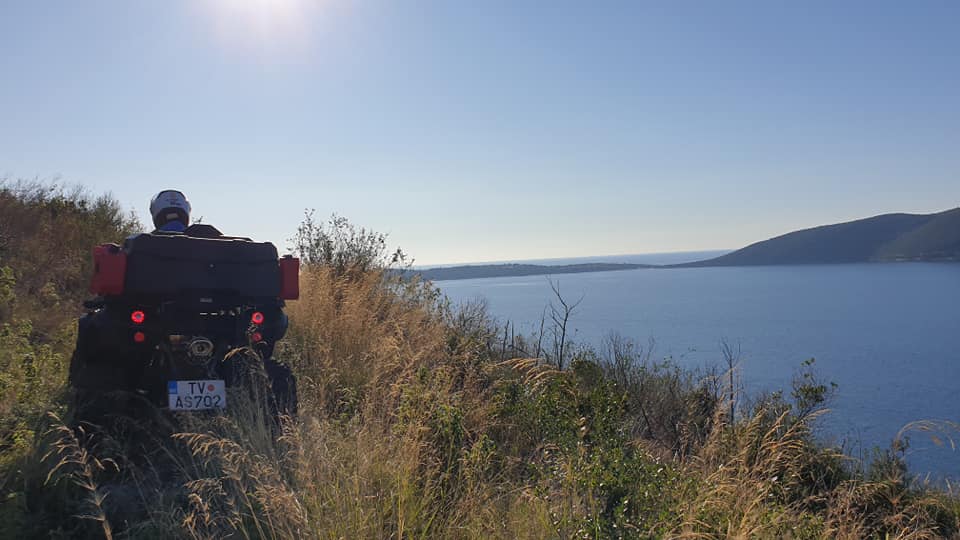
Ali, ako ste pomislili da je to najgore što ćemo ići off-road, Milan je imao drukčije planove. On zna za neka mjesta iznimne ljepote na poluotoku na koja čak niti Austrijanci nisu nikada naišli. Do njih nije vodio nikakav put, pa sam samo slijedio quad ispred sebe. Pogled je bio izniman, kao i vrijeme (21° C sredinom studenog).
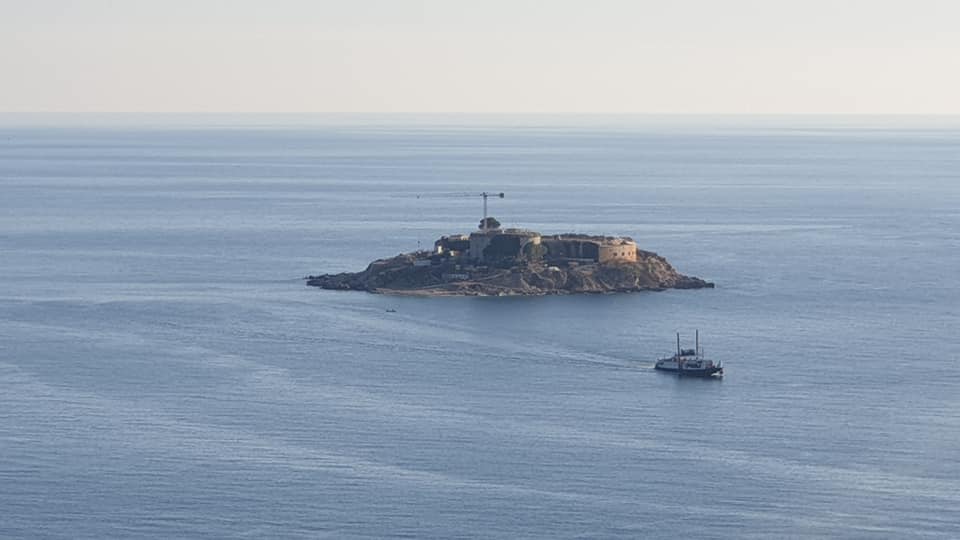
Pogleda na utvrdu Mamula, koja bi sljedeće godine trebala biti otvorena kao hotel s 5 zvjezdica.
Obilazak koji nikada neću zaboraviti.
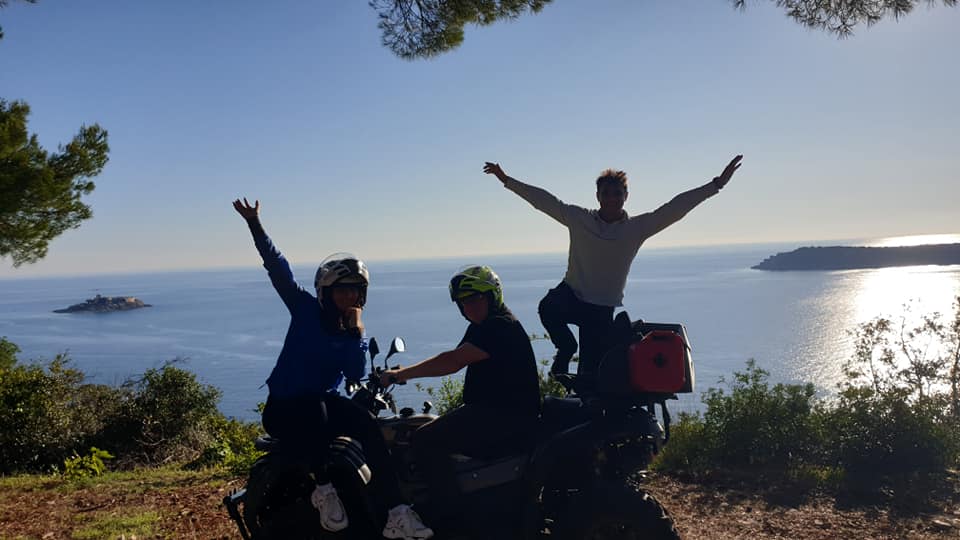
Ogromna zahvala ludom Milanu i Tamari za njihov dio u najboljem turističkom iskustvu ove godine za mene. Zaista preporučam.
Kada je obilazak završio, došlo je vrijeme da se vratimo u hotel Chedi Luštica Bay, isprobati njihovu vansezonsku ponudu.
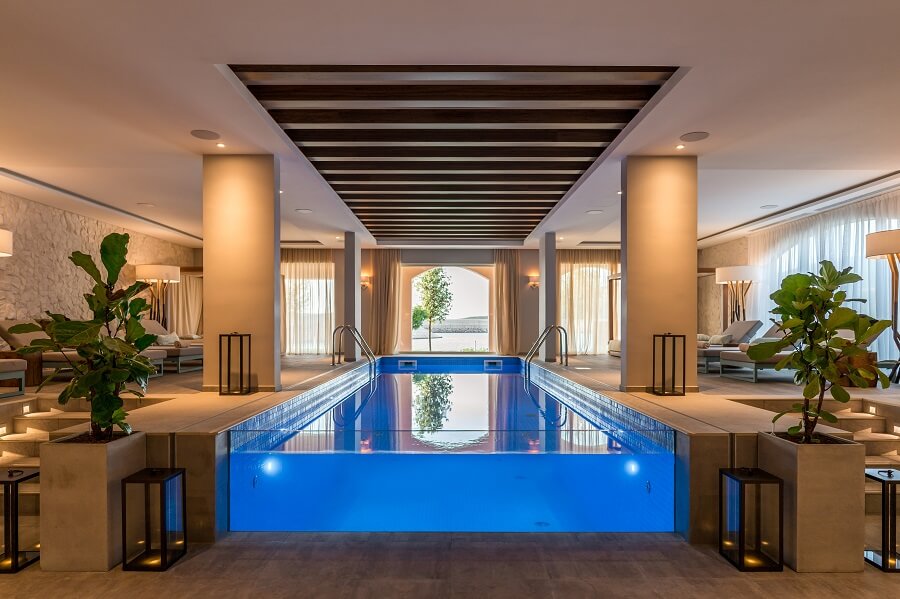
I dok su se neki gosti kupali u vanjskom bazenu, u unutrašnjem nije bilo nikoga.

Dok sam boravio u Luštici, objavljeni su dobitnici 2020 World Luxury Hotel Awards i među njima je bilo dobrih vijesti za Chedi Luštica Bay, koji je proglašen najboljim luksuznim obalnim hotelom u Europi, najboljim luksuznim boutique restoranom u Europi i najboljom ekipom Spa u Crnoj Gori. Impresivan broj nagrada, pa sam morao malo istražiti. Palac gore za tajlandski curry od kozica i kokosa, egzotični djelić menija koji se inače koncentrira na lokalne organske proizvode.

... od tajlandskog curryja do tajlandske masaže. Opuštajući način da se oporavim od avantura na quadu.

Jedan od izazova za team iz Chedija leži u privlačenju domaćeg tržišta. Kada je otvoren Porto Montenegro u Tivatu prije više od deset godina, bilo je očekivano da će biti doživljen kao mjesto za bogate strance, nedostupan domaćima. Ta se percepcija sada promijenila, te je taj projekt postao popularan među domaćima, ali sam imao dojam da Chedi i njegovo selo oko marine domaći i dalje doživljavaju tako.
No, i ta se percepcija polako mijenja kako marina otvara sve više dućana, kafića i restorana, pa je sve više domaćih stanovnika tamo otišlo na kavu i prepričalo doživljaje. Promjena je percepcije također i posljedica novog pristupa managementa hotela, čija je strategija povećati broj aktivnosti koje nude. Ne samo biciklizam, kajaci i quad vozila, nego također unutar i oko samog hotela, a na kojima će domaće stanovništvo biti više nego dobrodošlo.
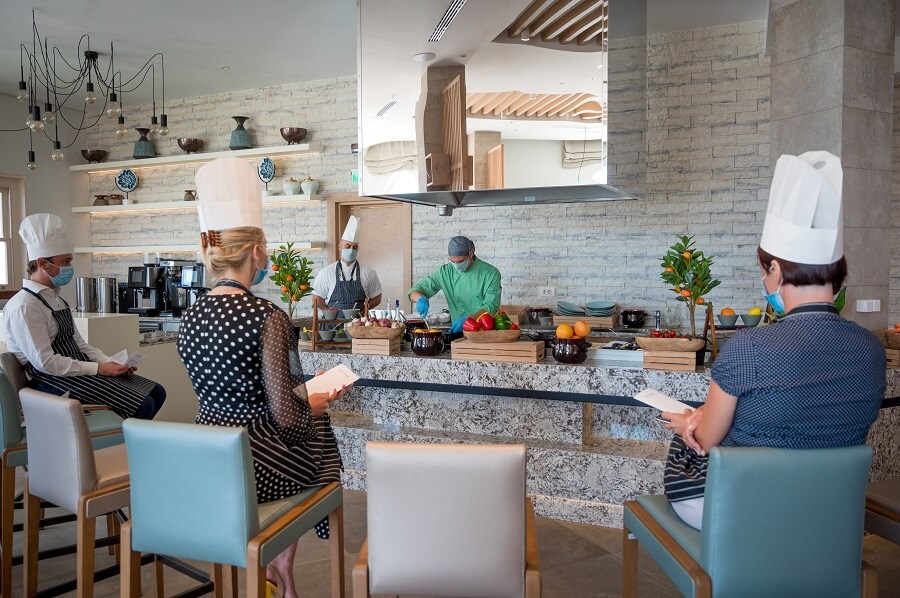
Tečajevi kuhanja za odrasle četvrtkom

Tečajevi izrade kolačića i umjetnosti za djecu vikendom.

Besplatne filmske večeri, uključujući i besplatne kokice, srijedom. Ponekad se to odvija u amfiteatru u marini, koji je zaista spektakularno mjesto za gledanje filma.

A ponekad u predvorju hotela, gdje gosti mogu uživati u njegovom komforu i velikom ekranu.
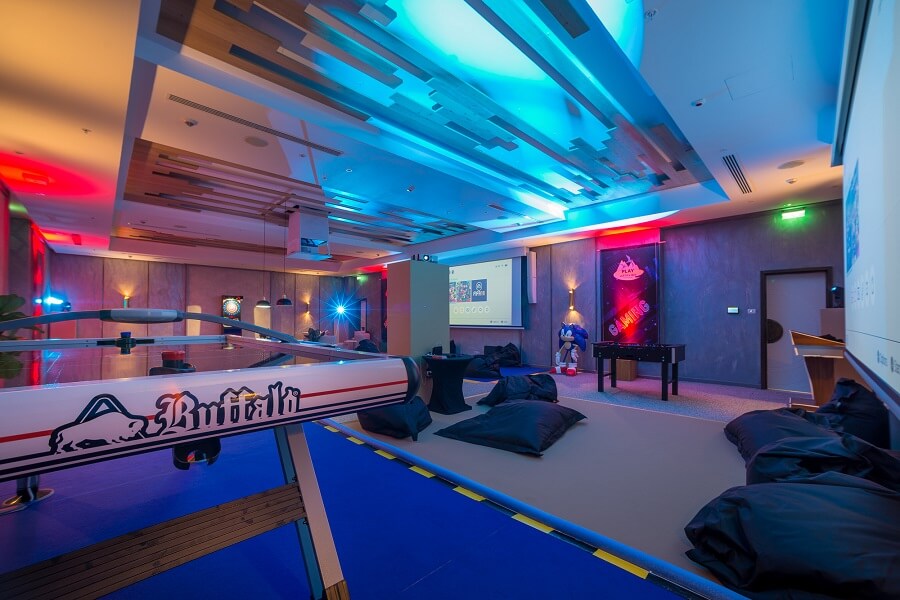
A zabava za djecu ne ovisi o vremenu, pa preinačena konferencijska sala nikad nije izgledala zabavnije niti bila popularnija.
Kratki video-obilazak
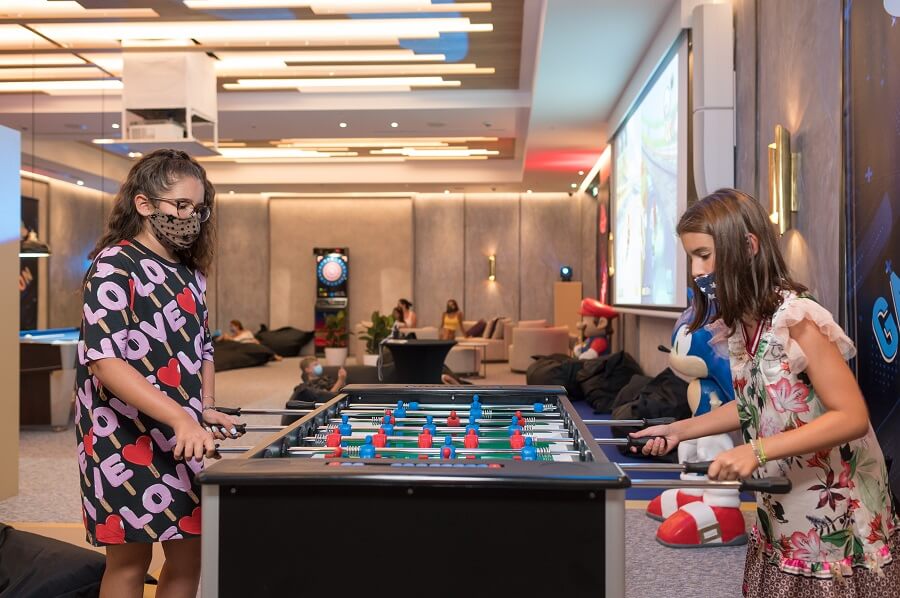
Svi ovi dodatni sadržaju su besplatni za hotelske goste, ali i – a to je lijepa gesta – besplatni i za domaće posjetitelje i svakoga tko dođe u hotel i tamo išta potroši. Nije loše investirati, da biste se opustili u ovoj oazi uz more, dok vam se maleni zabavljaju i igraju istražujući.

I posjetitelji iz regije im pristižu. Da su stvari normalne, možda bi ove zime razmišljali o plaži u Tajlandu ili Šri Lanci, ali kako im te opcije nisu baš dostupne ove godine, ispunjujuća obiteljska zabava s nešto prirodnog luksuza pokazuje se kao ugodna, iako neočekivana alternativa. Jedna sjajna inovacija koja mi se zaista svidjela je „resort credit“ – ako uzmete sobu ili više njih s pogledom na more u ovoj destinaciji aktivnog stila života za 199 eura ili više, cjelokupnu ćete cijenu sobe moći iskoristiti u cijelom resortu, te čak dobiti i neka noćenja besplatno. Malo uživanja na quadovima, kajaci, masaža, filmske večeri i dobra hrana, a smještaj dobijete besplatno.
I ovaj novi fokus na aktivnosti čini se da djeluje, jer hotel predviđa da će imati daleko veći prihod od aktivnosti u sljedećoj godini. Zanimljivo je bilo da je tijekom mog boravka jedna četvrtina gostiju uplatila neke od dodatnih aktivnosti. Zaista, čini se da je ovaj promjena smjera prema stilu života, outdoor aktivnostima i regionalnom tržištu je vjerojatno najbolji turistički odgovor koji sam vidio na Jadranu tijekom ove bremenite godine.
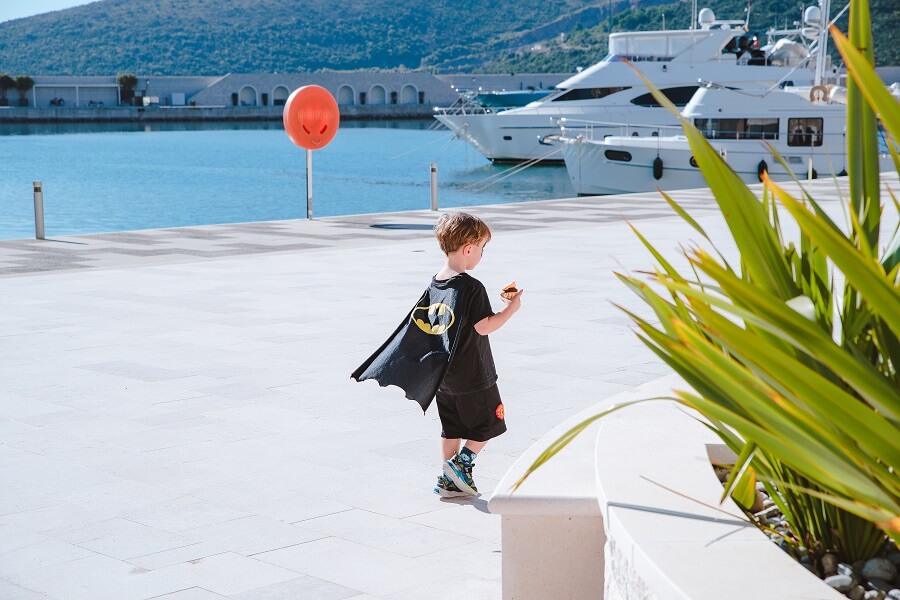
Bila je ovo stresna godina za sve nas, i nisam bio siguran što će me čekati u Crnoj Gori ovaj put. Ali, ono što sam dobro zapamtio i 48 sati kasnije jest luksuz. Ne udobni kreveti, ne fantastični pogledi, ne ukusna hrana, ne pamtljive aktivnosti. Nego luksuz koji je spomenuo moj prijatelj s početka – priroda, prostor, svjež zrak, privatnost. Dojam je bio kao da smo i dalje u staroj normalnosti, kada smo te neke stvari uzimali zdravo za gotovo. Zaljev Luštica je mjehurić, nema dvojbe, a energija ljudi koji tamo žive i rade jednostavno je zarazna.
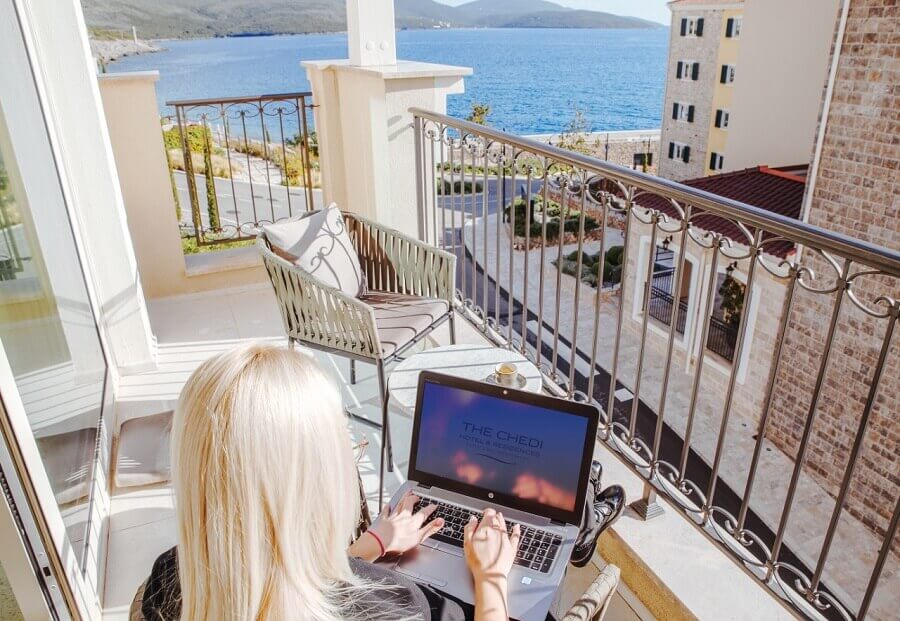
Jedna od najzanimljivijih prilagodbi novom dobu je odluka da se neke hotelske sobe pretvori u uredske prostore. Ovi su novi uredi dostupni po all-inclusive cijeni od 790 eura mjesečno, uz neograničeni parking i brzi Internet. Pristup svim uslugama i aktivnostima hotela, kao i inspirirajući pogled kao što je onaj iz ureda koji vidite gore, još je jedan inovativni iskorak koji se već isplaćuje: prvi digitalni nomad već je iskoristio ovu ponudu u inicijalnom tromjesečnom periodu.
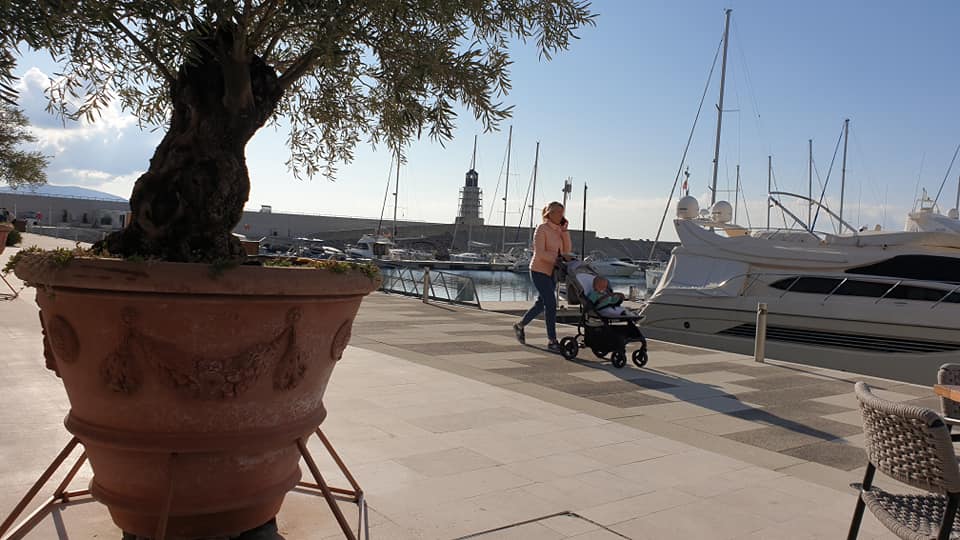
Staro normalno na kraju 2020. Da, to zaista postoji. Nije da se epidemiološke mjere ne provode. Provode se, i čini se da ih se ljudi pridržavaju bolje nego sam navikao vidjeti u Hrvatskoj. Možda je jedan od razloga zašto sam stekao takav dojam i taj što nisam vidio mnogo ljudi – možda ukupno njih 10 tijekom 4 sati obilaska na quadu, naprimjer.
Jedan običan ručak u marini Luštica sredinom studenog.
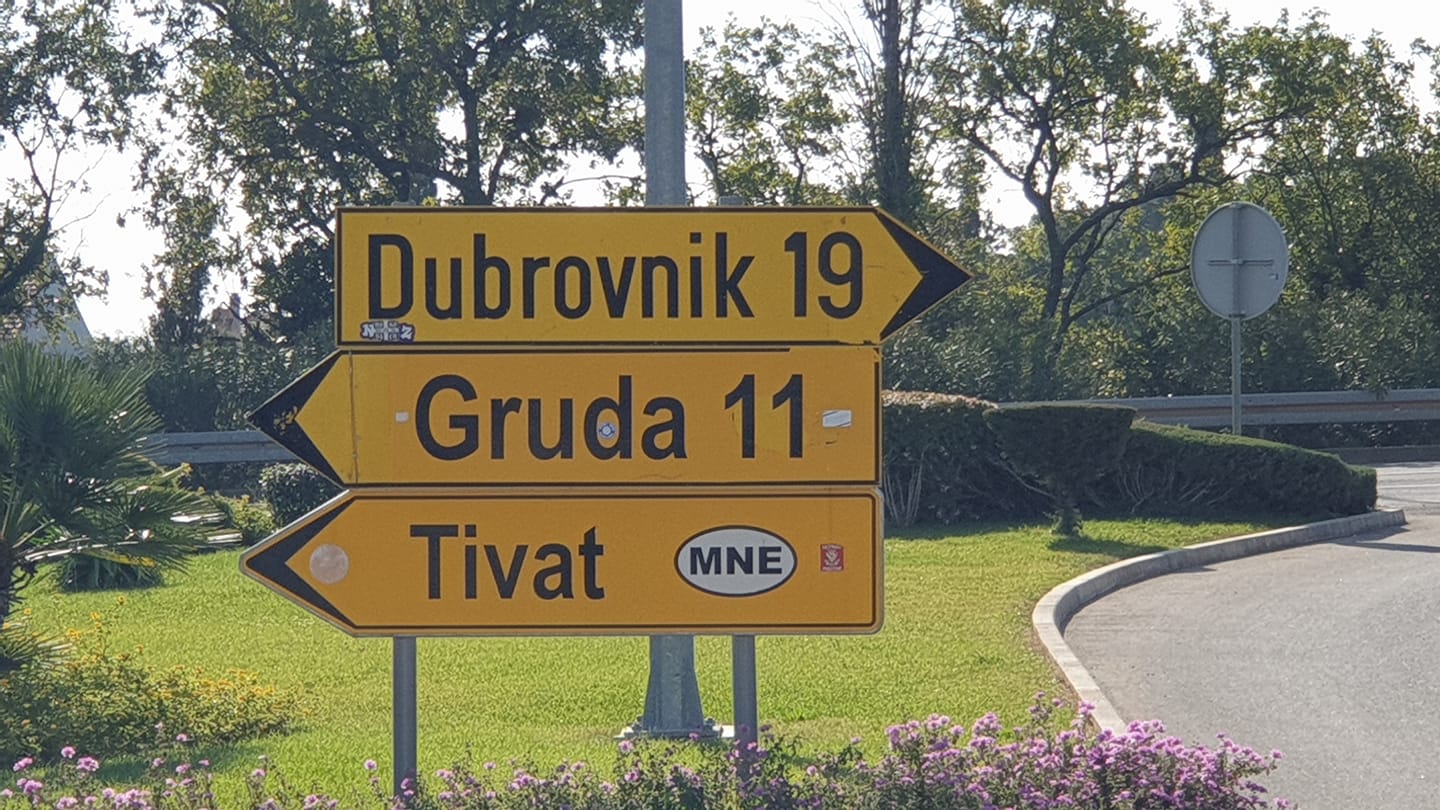
U vožnji natrag do dubrovačkog aerodroma, za oko mi je zapeo prometni znak na mjestu gdje se napušta aerodrom. Dubrovnik je desno, na 19 km, Gruda lijevo, 11 km. A ispod toga, neko mjesto koje se zove Tivat u Crnoj Gori. Nasmijao sam se.
Tijekom prijevoza od hotela moj mi je prijateljski nastrojen vozač rodom iz Tivta pričao o životu u Tivtu prije dolaska luksuznog turizma, prvo kroz Porto Montenegro a sada i kroz Luštica Bay.
"Prije 15 godina, Tivat je bio toliko nebitan da ga nisu spominjali ni na vremenskoj progonozi na nacionalnoj razini. A vidite ga sad."
Svakako. Tada bi i sama ideja da bi netko otišao iz Dubrovnika u Tivat za vikend odmor bila ismijana. Danas se to vrlo često događa. A sada ako pristanete putovati još 10 minuta, možete istražiti divlju ljepotu i staro normalno. U luksuzu. Luksuzu koji uključuje prirodu, prostor, ljepotu i beskonačno mnogo svježeg zraka.
Srdačno vam to preporučam.
Dugujem mnogo zahvala timu Chedi Luštica Baya što su mi omogućili posjetu i sa mnom podijelili svoja razmišljanja. Saznajte više o čaroliji u zaljevu Luštica na službenoj web stranici..
(Paul Bradbury bio je gost u The Chedi Lustica Bay tijekom studenog 2020)
Lessons from Montenegro: Wild Beauty & The 'Old Normal' at The Chedi Lustica Bay
November 13, 2020 - What to do when the planes stop flying and traditional tourism markets dry up? An innovative shift in focus at the Chedi Lustica Bay, and some lessons from Montenegro in how to reinvent tourism.
"Luxury means different things to different people," a friend said to me recently "For me at the moment, luxury means nature, space, fresh air and outdoor activities."
Things we used to take for granted, I thought to myself later - particularly those who were forced to endure weeks of urban lockdown earlier this year (and in some cases, once more this winter). COVID-19 seemingly has no preferences of victim based on importance, reaching the highest officials in 10 Downing Street and The White House, to name but two. Nature, fresh air, space, privacy - a chance to breathe and return to the old normal. That really is luxury, I agreed, before putting on my mask once more as I entered Zagreb Airport.

I was on my way to Montenegro, staying at The Chedi Lustica Bay where I discovered first hand how they are currently navigating the hotel industry’s troubled waters. The hotel wanted to show me how they were adapting to the considerable challenges of the new reality. The weather was spectacular, they promised, and a quad bike tour of the peninsula would be a highlight of the year. Looking out of the window at one more drizzly grey afternoon in Varazdin, I didn't take much convincing, and we made plans for a 3-night stay, with me flying down to Dubrovnik.
Longterm readers of TCN may recall an article I wrote soon after my first visit to Lustica, back in February, 2018. Back then I was stunned that such a project could actually be getting off the ground in the Balkans when I had spent years watching major foreign investments in Croatia get strangled by paperwork, bureaucracy and corruption. And yet here, across the border, a visionary Swiss-based business was investing 1.1 billion euro to develop a prime piece of real estate. The 7 million m2 plot on the Lustica peninsula would be home to no less than 7 luxury hotels, a new village of 2,500 people, two marinas and an 18-hole golf course. The project, done in partnership with the Montenegrin government, was moving forward at speed. Crucially, with such a large amount of land, the investor was in total control of the design of the space. If he wanted to build an experience that focused on peace, beauty, nature and stress-free living, he had no neighbours he needed to negotiate with.
And that is exactly what is happening at Lustica Bay.
It was an experience which led me to write one of my most discussed articles ever on TCN (even at ministerial level in both Croatia and Montenegro) after that first visit - Lessons from Montenegro: Why Luxury Lustica Bay Will Never Happen in Croatia.

During my first visit to Lustica almost three years ago now, I encountered what was essentially a building site, and I remember laughing when I was told that the luxury The Chedi Lustica Bay would open in July that year, especially when reverting back to my experience of such projects in Croatia. But open in July it duly did, and progress since then has been more than impressive, despite the slowing brakes of the corona era.

To be honest, when the hotel contacted me, I was surprised that the Chedi Lustica Bay was even open in mid-November, especially in this crazy year which has ravaged tourism all over the world.
One of the challenges of tourism in both Croatia and Montenegro is seasonality. This chart of Lustica's most important feeder airport - Dubrovnik - gives a great indication of the seasonality of its tourism. And these statistics are from 2019, which was a normal year.
Understandably, the tourist arrivals mirror the frequency of flights. Take away the flights, and you take away many of the traditional tourism markets. Just ask Dubrovnik. While most of the rest of Croatia benefited from the lack of flights because neighbouring countries were forced to choose drivable destinations due to no flights, Dubrovnik was starved of tourist supply and registered just 12% of 2019 arrivals for the first 6 months of this year.
The situation was even worse for Montenegro. Not yet an EU member, some of its main markets were effectively killed for the year when Montenegro was removed from the EU list of safe countries. The 14-day self-isolation requirement on return made a holiday to Montenegro unattractive to all but the diehard fan. In 2019, 49% of tourists to Montenegro came from Germany, Russia and the UK alone, all markets which were effectively cut off for this year. Regional visitors made up just 9% of tourist arrivals last year.

But regional tourists had one big advantage for those tourism businesses willing to seek them out - they could arrive by car. And while the average tourist from regional countries may not have as much disposable income as the Brits, Germans and Russians, there are a significant number of wealthy people in countries such as Serbia, Croatia, Bosnia and Hercegovina, Kosovo, North Macedonia and Albania. They, too, were perhaps planning to fly outside the region, and the lack of flights meant that they were a new target market. This is especially true in the winter months, when tourism locally is traditionally dead. Many tourist businesses close for the winter months on the Adriatic. It is the time of year when the owners relax after a long and successful season, and they fly off somewhere for an extended and well-earned holiday. With no flights this winter, the market is there for those with something to offer.
And the results were impressive. With tourism numbers necessarily much reduced, this year's regional visitors topped more than 80% of all arrivals (up from just 9% next year), with the 2021 forecast as things return towards normality projected at 60% for the hotel.

And, as I discovered during my latest visit to the Chedi Lustica Bay, there is plenty on offer against a backdrop of pristine nature, clean air, space and privacy. Luxury, my friend at the start of this article would call it.
So what is it that the Chedi is doing differently, remaining open all year, when many hotels in Dubrovnik did not open at all in 2020?
The two keys to its relative success are the amazing adventure playground which has no neighbours, as well as a management team not afraid to diversify and explore new avenues.
It is often said that the Montenegrin coast is overbuilt and its beauty compromised. While this is certainly true in places (look away now Budva and Herceg Novi), nothing could be further from the truth on the Lustica peninsula. It really is a bubble of positive vibes and unhindered beauty at every turn, quite unlike any other I have encountered on the Montenegrin coast. And, as I was to discover on my quad bike tour, it has a deceptively rich (and extremely healthy) tourism offer.
When I first visited The Chedi Lustica Bay in early 2018, it was still under construction. My impression was that this was an excellent project, but it was all a little isolated from the rest of the tourist action.
It was only on this visit that I began to fully appreciate the magic of the Lustica Bay experience, now that more has been constructed, and things falling into place. Far from being just a hotel, those 7 million square metres offer the complete Lustica experience, quite possibly one of the best such luxury experiences of space, nature, beauty and fresh air that exists in Europe today.
Using the hotel as a base, there are breathtaking opportunities for cycling on roads where you will encounter nobody.
Or yoga on the water, a calming way to start the day.
The 18-hole Gary Player golf course is not yet finished, but the driving range is open and very popular most of the year (open until November 15).

There were several people on the beach, and even swimming in mid-November, while the kayaks and SUP boards are available for use.

The fleet of quad bikes or e-bikes awaits, which can be rented either with or without guide. The quad bike guide is definitely worth it.

I have to confess I was a little nervous about taking the quad bike, a first time for me, but I was assured by the excellent (if slightly crazy) Chedi guides that this would be one memorable tour.
They were not wrong.

What an incredible way to explore the peninsula, at one's own pace and interest level.
Any thoughts that this might be a gentle tour sticking to the main roads were quickly dispelled, as we headed offroad for the first time, stopping occasionally to remove obstacles in our way (see above).

Time to admire the many beautiful churches to be found in Lustica villages.

A chance to observe the relaxed local way of life - Montenegro in autumn on a glorious November late morning.

Driving through traditional waterfront villages, an oasis of calm.

Our guide Milan was a Lustica local, passionate about his peninsula. He took us to some of his favourite spots where his friends like to go hiking, get away from the crowds, and enjoy barbecues in nature, such as this place by one of the Boka region's 85 fortresses, which were built by the Austro-Hungarians.

Fortresses which had their secrets, as Milan guided us through a 400-metre tunnel under the fortress at Grabovac.

Sensing our appreciation of his tour, Milan took us deeper into his world, showing us the quaint stone villages, many of whose houses are sadly in a state of disrepair.

While others have been beautifully restored and offer stunning views surrounded by nature and no other people.

The colours of Lustica in autumn.
Wild beauty and the old normal. After months of stressing about - and writing about - the pandemic, it really felt that I had found a tiny bubble of natural freshness which harked back to how life used to be.

Onward we drove through the fields and past the olive groves from where Montenegro's exquisite olive oil hails. If you have the time and inclination, there are additional delights to sample, including olive oil tasting at the Moric family olive grove, as well as some quite sensational local cheeses produced by a Russian woman who moved to the peninsula 9 years ago.

A little donkey feeding is also on offer.

And everywhere, the dry stone walls lining the roads.

The Austro-Hungarian influence is strong in the Boka region, and not only due to the numerous fortresses. Masters of infrastructure, it seems that the Austro-Hungarians were ahead of their time, even laying the foundations a century ago of today's quad biking routes. Now we were going truly off-road.

But if I thought that was as off-road as it was going to get, Milan had other ideas. For he knew of places of extreme beauty on his peninsula that the Austro-Hungarians had never come across. There didn't seem to be any road, so I just kept in the line behind the quad in front. The views were outstanding, as was the weather (21C in mid-November).

A view of Mamula fortress, which is on schedule to open as a luxury 5-star hotel next summer.
A tour I will never forget.

Huge thanks to crazy Milan and Tamara for their part in the best tourism experience of the year so far. Highly recommended.
The tour over, it was time to return to home base to sample the off-season offer of the Chedi Lustica Bay.

While there were other guests swimming in the outdoor pool, the indoor one was free.

During my stay, the 2020 World Luxury Hotel Awards were announced, and there was good news for the Chedi Lustica Bay, which was voted Best Luxury Coastal Hotel in Europe, Best Luxury Boutique Restaurant in Europe, and Best Spa Team in Montenegro. An impressive haul of accolades which I decided to investigate. Thumbs up for the Thai coconut prawn curry, an exotic dash on a menu which otherwise focuses on organic local produce...

... from Thai curry to Thai massage. A relaxing way to recover from my quad biking adventures.

One of the challenges the Chedi team faces is attracting the local market. When Porto Montenegro opened in Tivat over a decade ago, it was understandably seen as a haven for rich foreigners, off-limits to locals. That perception has now changed, and the development is popular with locals, but I had the impression that this was how The Chedi and its marina village was viewed by locals.
That perception is also gradually changing as the marina village opens more shops and hospitality outlets, and as more locals came for a coffee and reported back. But that change in perception is also a result of the fresh approach from the hotel management, whose strategy is to increase the number of activities on offer. Not just the cycling, kayaking and quad biking, but also within and around the hotel itself, with locals more than welcome.

Cooking classes for adults on Thursdays.

Cookie and art classes for kids at weekends.

Free movie nights, including free popcorn, on Wednesdays. Sometimes these are held in the amphitheatre in the marina, a truly spectacular movie location.

And sometimes in the hotel lobby, where guests are free to enjoy the comforts of the lobby and the big screen.

And the kids' entertainment is not weather-dependent, and the converted conference room has never looked so appealing or popular.
A quick video tour.

All these extra facilities are free of charge to hotel guests, and - in a nice gesture - also free to locals and anyone else who comes to the hotel and spends. Not a bad investment to relax in this waterfront oasis while allowing the little ones to explore and play.

And regional visitors are coming. Normally, they might have been eyeing a beach in Thailand and Sri Lanka this winter, but with those options no longer on the table, some fulfilling family fun with a touch of natural luxury is proving to be a pleasant if unpredicted alternative. One great innovation which I really liked is the hotel's resort credit - Book one or more nights in a seaview room in this active lifestyle destination starting at 199 euro and use the entire room rate as resort credit and stay for free. A little quad biking, kayaking, massage, movie nights and fine dining, with the accommodation thrown in for free.
And this new focus on activities seems to be working, with the hotel projecting much higher revenues from activities for next year. Interestingly, during my stay, a quarter of guests had signed up for an additional paid activity. Indeed, this overall shift in focus towards lifestyle, outdoor activities and the regional market is probably the best tourism response I have encountered on the Adriatic during this troubled year.

This has been a stressful year for us all, and I was not sure what I would encounter on my brief trip to Montenegro this time. But what stays with me some 48 hours later is that luxury. Not of the comfortable bed, the excellent views, the delicious food, the memorable activities. But the luxury that my friend mentioned at the beginning - nature, space, fresh air privacy. It really felt like the old normal, the things we used to take for granted. Lustica Bay is a bubble, no doubt, and the energy of the people living and working there rubs off on you.

One of the most interesting adaptations to the new realities has been the decision to convert some rooms into office units. These new offices are available for an all-inclusive price of 790 euro a month and unlimited parking and high-speed Internet. Having access to all the hotel facilities and activities, as well as inspiring views such as from this office above, it is one more innovative angle that is already bearing fruit; the first digital nomad has already taken advantage of this offer for an initial 3-month period.

The old normal at the end of 2020. It does exist. Not that epidemiological measures were not in place. They absolutely were, and seemingly adhered to much more strongly than I am used to back in Croatia. Perhaps part of the reason for that feeling was that I did not come across that many people - perhaps 10 in all during our 4-hour quad bike tour, for example.
Just a normal lunchtime on the Lustica marina in mid-November.

On the drive back to Dubrovnik Aiport, I caught sight of the traffic sign as you leave the airport. Dubrovnik to the right, 19 kilometres, Gruda to the left, 11 kilometres. And below that, some place called Tivat in Montenegro. I smiled.
During my transfer from the hotel, my very friendly driver, a Tivat native, told me about life in Tivat before the arrival of luxury tourism and first Porto Montenegro and now Lustica Bay.
"15 years ago, Tivat was so insignificant that it was not even mentioned on the national weather reports. And look at it today."
Indeed. Back then, the very notion that someone would go from Dubrovnik to Tivat for a weekend to relax would have been laughable. Today, that is a very common occurrence. And now if you travel 10 minutes more, you can explore wild beauty and the old normal. In luxury. A luxury that includes nature, space, beauty and endless fresh air.
I heartily recommend it.
With many thanks to the Chedi Lustica Bay team for arranging my visit and sharing their insights. Learn more about the magic of Lustica Bay on the official website.
(Paul Bradbury was a guest of The Chedi Lustica Bay in November 2020)
A Tale of 2 Golf Courses: Dubrovnik and Lustica Bay, Montenegro
April 12, 2019 - Continuing our look at the lack of foreign investments in Croatian tourism, taking a closer look at one of the government's flagship tourism strategies - golf. Oh dear.
This is not an article about golf.
This is not an article debating whether or not golf tourism is a good or bad thing, that is an entirely different discussion.
This is an article about incompetence.
This is an article about a sector of tourism which is central to Croatia's tourism strategy (according to its own documents) and yet where not only has nothing happened for a decade in terms of progress, but the Croatian tax-payer is facing a potential imminent bill of 500 million euro from an Israeli investor who has now given up on his golf dream in Dubrovnik.
Meanwhile in Montenegro...
Whenever I criticise something about Croatia (always in a constructive manner) and praise a neighbour, the haters flood my inbox with expletives and advice that I should leave Croatia. Apart from finding this pretty amusing, it highlights one of the main problems which is stopping Croatia from progressing, at least in my opinion. I call it the policy of deflection. Rather than accept that a foreigner might have a valid point and try and learn and improve, the standard response is abuse and attack - trying to deflect the issue. And so nothing changes.
I can understand why some people get angry when I compare the incompetence of our Kings of Accidental Tourism with other countries. Lessons from Macedonia on how to promote the wine industry, for example. Lessons from Rwanda, on how to use football to promote tourism. And Lessons from Montenegro, on how to become a luxury tourism destination, while turning Dubrovnik into an extension of luxury Montenegro's offer in the process. But that does not stop me wanting to try. As a foreigner living here for 17 years, running news portals in Croatia, Montenegro and Slovenia, I have perhaps a different perspective, and I genuinely want the best for Croatia, which is why we need to learn what we are doing badly, and what others are doing well. And then learn and improve.
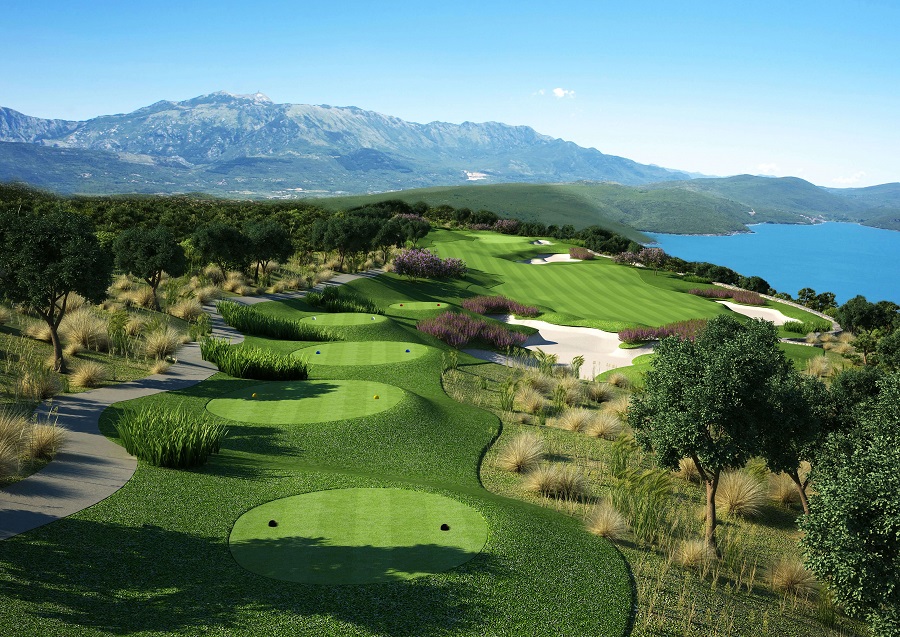
(All images and renderings courtesy of Lustica Bay golf development)
Today, we look at perhaps the finest example of incompetence in tourism strategy that I have come across in my time in Croatia. A sector of tourism whose lack of progress is the poster child of why foreigners are investing less money in Croatia each year than its diaspora are sending home in remittances. A sector of tourism where the neighbours are leading the way in luxury tourism.
The sector is golf.
As mentioned above, this article is not about whether or not golf is a good thing for the region. This article is looking at the strategy of Croatia's tourism gurus and a comparison what is happening just across the border in Lustica Bay in Montenegro.
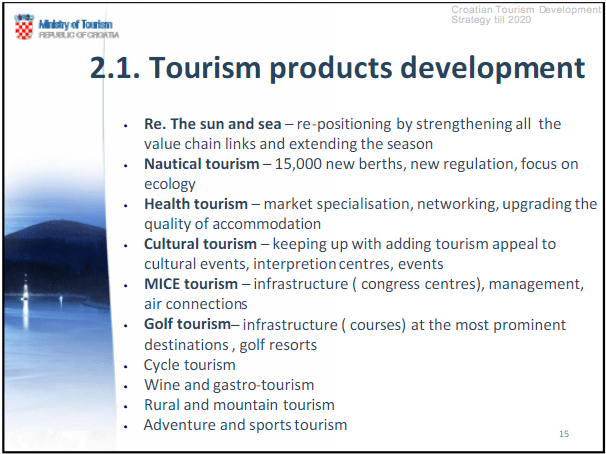
Let's start at a fixed point - the Croatian Ministry of Tourism's Tourism Development Strategy 2013-2020. As you can see above, golf is central to the country's strategy. I contacted the Ministry of Tourism last year to ask for details: Here was the reply:
"The 2020 tourism development strategy foresees the construction of 30 new high-quality golf courses, roughly at the following locations: 14 in the northern Adriatic, 8 in the southern Adriatic, and 8 in continental Croatia."
Impressive indeed, except for one thing. Almost 5 and a half years into the plan, I had not heard of any golf course being constructed.
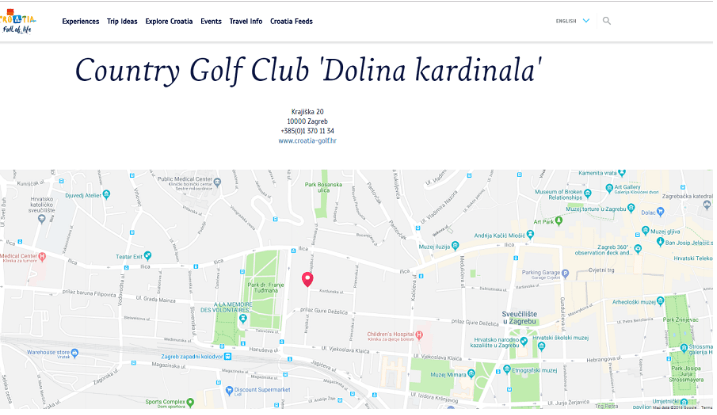
I asked how many courses Croatia had and how many were being built. Nobody seemed to know anything for sure. The ministry said there were three courses in Croatia, one of which was actually a driving range, the Croatian National Tourist Board trumpeted four courses, one of which was conveniently located in the centre of Zagreb (see above), whereas in actual fact...
... it had been abandoned for years (see drone video above).
Clearly, the strategy was not quite working, unless the Ministry was going to produce 30 golf courses and a white rabbit out of a hat.
This staggering non-performance did not deter our heroic ministry, however - far from it. In June last year, the ministry reported:
Joining the family of golf destinations is imperative for the Croatian tourism industry, because without it Croatia will remain a seasonal tourist destination, the first conference on golf tourism in Croatia said in the northern Adriatic town of Porec.
Assistant Tourism Minister Robert Pende said that Croatia would not be able to increase the accommodation occupancy rate significantly without making progress in the golf segment. He said that a lot had been done to adjust infrastructure as a prerequisite for any serious golf projects, especially on state-owned land.
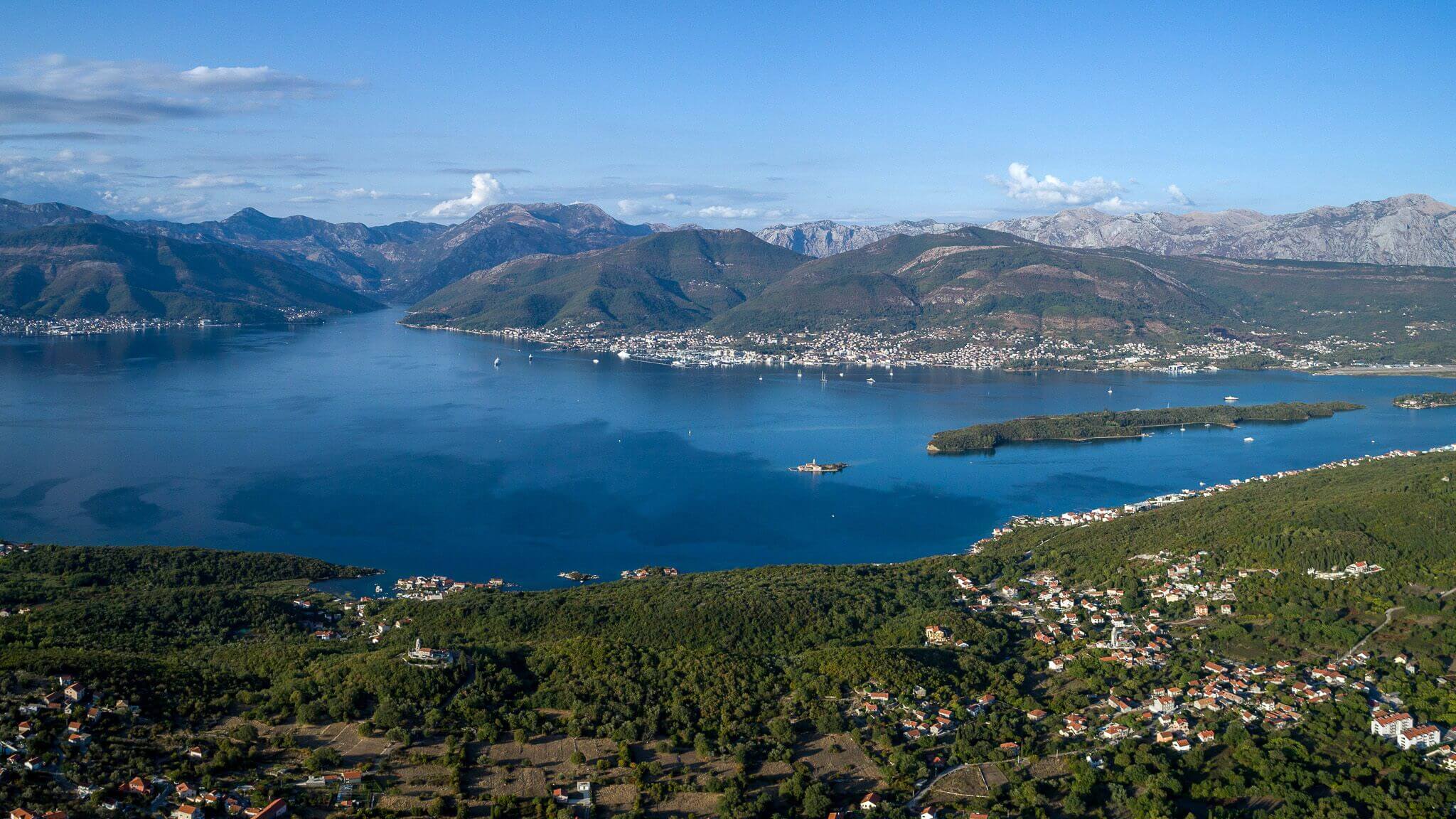
"With the existing investor interest, I think we have created preconditions for getting several golf projects in the next two to three years," Pende said, noting that Istria County was leading in that regard.
"Golf is additional content which all our competitors have. Croatia is very suitable for the development of golf tourism because of the proximity of outbound travel markets and the possibility of playing golf along the coast all year round. We must seize that opportunity," Pende said.
I contacted the Ministry of Tourism for clarification, but there was no reply.
Croatia's smaller Western neighbour, Slovenia, has 13 golf courses, despite golf not being a core focus, as far as I am aware. Interested in golf in Slovenia - here is the Total Slovenian News guide.
Croatia's love affair with pretending to be a golf destination then preventing anything from happening goes back much further than the 2013 strategy document. When I had my own real estate agency back in 2004, there were no less than 22 courses earmarked for Istria alone. And one of them had rather a famous backer.
Jack Nicklaus Begins Work on Golf Course in Croatia
ZAGREB Croatia, May 19, 2006. Jack Nicklaus' organisation doesn't invest in dud deals. Any wise investor would do well to note where he is building his golf courses.
The world's most famous golfer was met by Prime Minister Ivo Sanader (who only last week started a prison sentence), and a 200 million euro golf resort in Istria was announced. Want to know how it is going? Whatever Happened to Jack Niklaus Croatian Golf Course, Approved by PM Sanader? You can also check out the plans, looks very nice.
Jack's very same project was being offered on YouTube a decade later.
And the paperwork is almost finished...
Of course, the biggest golf story in Croatia at the moment is the failed Srd development above Dubrovnik from Israeli investor, Aaron Frenkel.
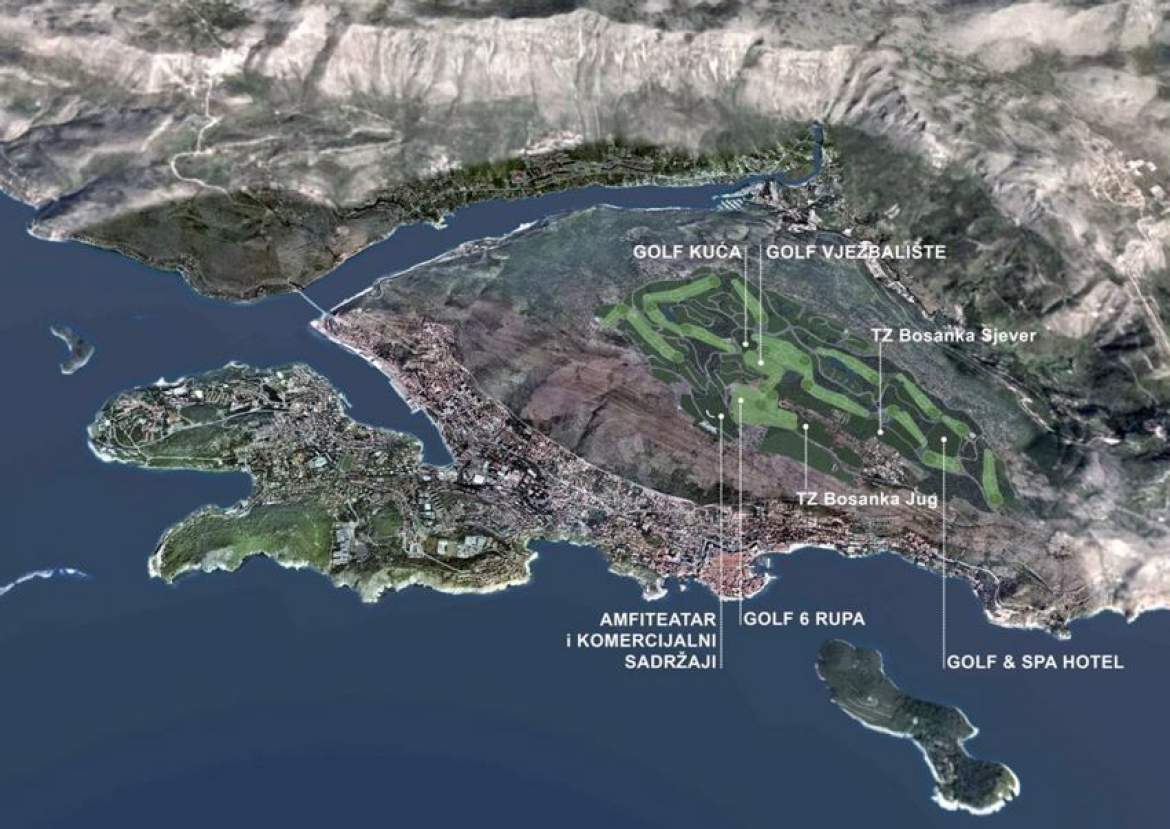
There is a LOT to this story, and I do not have the knowledge of the project to go into great detail about the reasons why the Srd golf project did not happen. That is was not popular locally was perhaps best exemplified by the results of a 2013 referendum on the project, where 10,051 votes against trumped the 1,846 for. From various people I have spoken to more familiar with the project, it appears to have failed through a cocktail of corruption, environmental campaigners, objections from those who defended Dubrovnik during its 1991 attack, and (I suspect) an element of local accommodation owners not fancying so much high-quality villa rental competition.

The investor has taken the case to arbitration in Washington, with a ruling due shortly. The Croatian taxpayer (that's you and me folks) looks set for a possible bill of up to 500 million euro.
So, we are now 6 years into the Ministry of Tourism's strategic plan to develop Croatia as a regional golf tourism tiger. The results so far: absolutely nothing close to the first phase of construction, and a potential bill of 500 million euro, as well as further loss of reputation among foreign investors.
Outstanding job!
Meanwhile, just over the borders...
I want to talk about Lustica Bay and Montenegro, but thought it also worthwhile mentioning a project just across the border in Republika Srpska, about 15 minutes from Dubrovnik Old Town. I have not heard anything about 'Dubrovnik Heights' in a while, but there were certainly plans to build a course just over the border. Using the brand of Dubrovnik, access to Dubrovnik Airport and the city as major draws. And while golf in Bosnia has been out of the news lately, here is an intriguing paragraph from the latest Gary Player newsletter, the famous golfer behind the signature 18-hole-course in Montenegro:
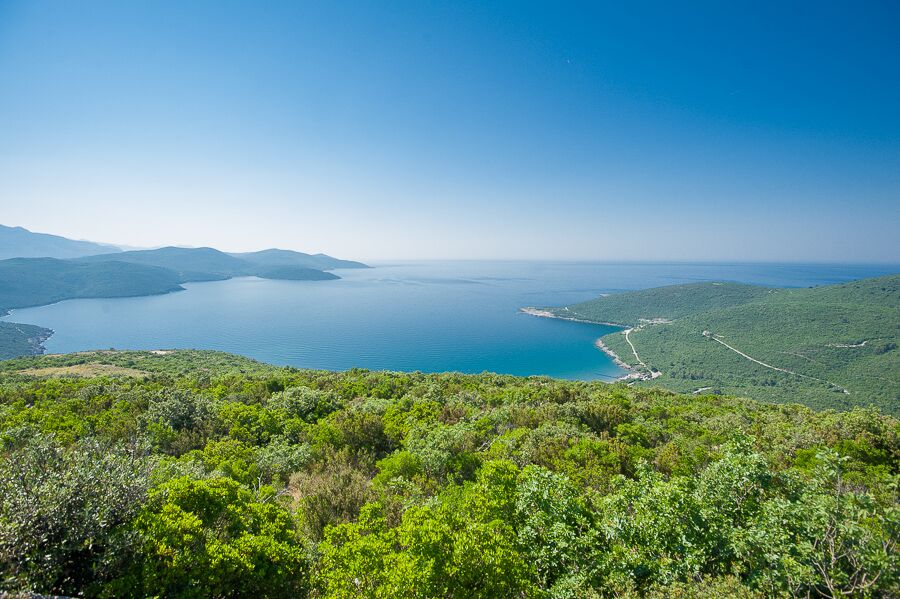
We would be delighted to start another project in Montenegro or the surrounding countries, but Lustica Bay is the one we are focusing on at the moment. Our design team is working on some feasibility studies for projects in Albania, Bosnia, Serbia and Romania so it’s a very active part of the world for us right now.
Albania, Bosnia, Serbia and Romania. But not the country with the defined tourism strategy to build 30 courses - Croatia.
And so to Montenegro.
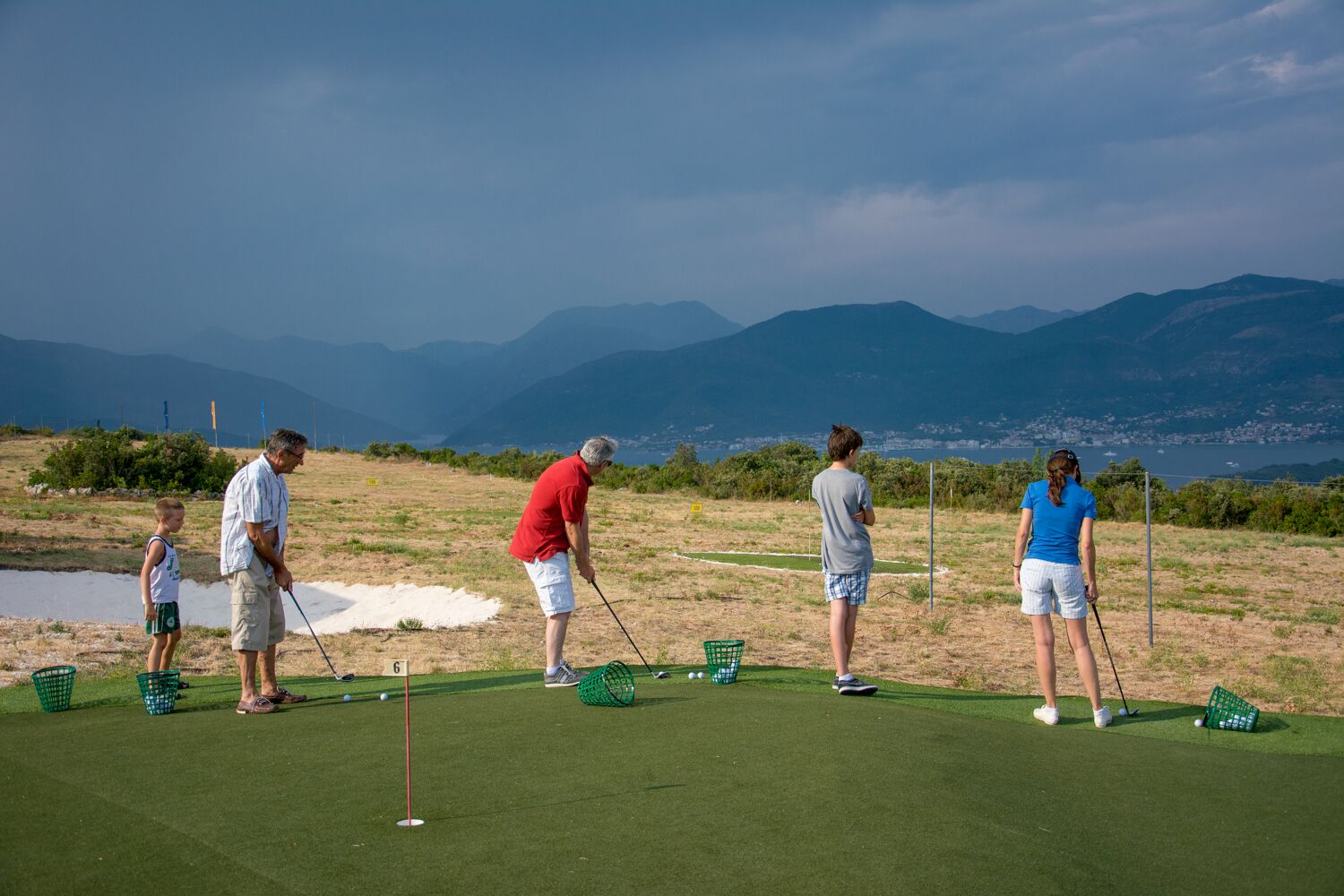
I upset a few people a few days ago with an article called How Dubrovnik is Becoming an Extension of Luxury Tourism in Montenegro. Apologies for those who were offended, but I am only stating what is the truth. As part of the 2.5 billion euro investments of Lustica Bay, Portonovi and Porto Montenegro (to name but three), Lustica Bay will have that Gary Player 18-hole course as an additional luxury tourism offer. With the airports of both Tivat and Dubrovnik offering increasingly year-round services, the options for high-spending luxury tourism are tantalising indeed. And with a visit to Dubrovnik a wonderful extension of that, the future looks very bright indeed. In a recent interview (which you can read here), Player had the following update:
The Marina and Chedi hotel is completed and opened last year, the marina village residences are also open. For the golf, 9 holes will open in 2021 and 18 ready for play in by 2022.
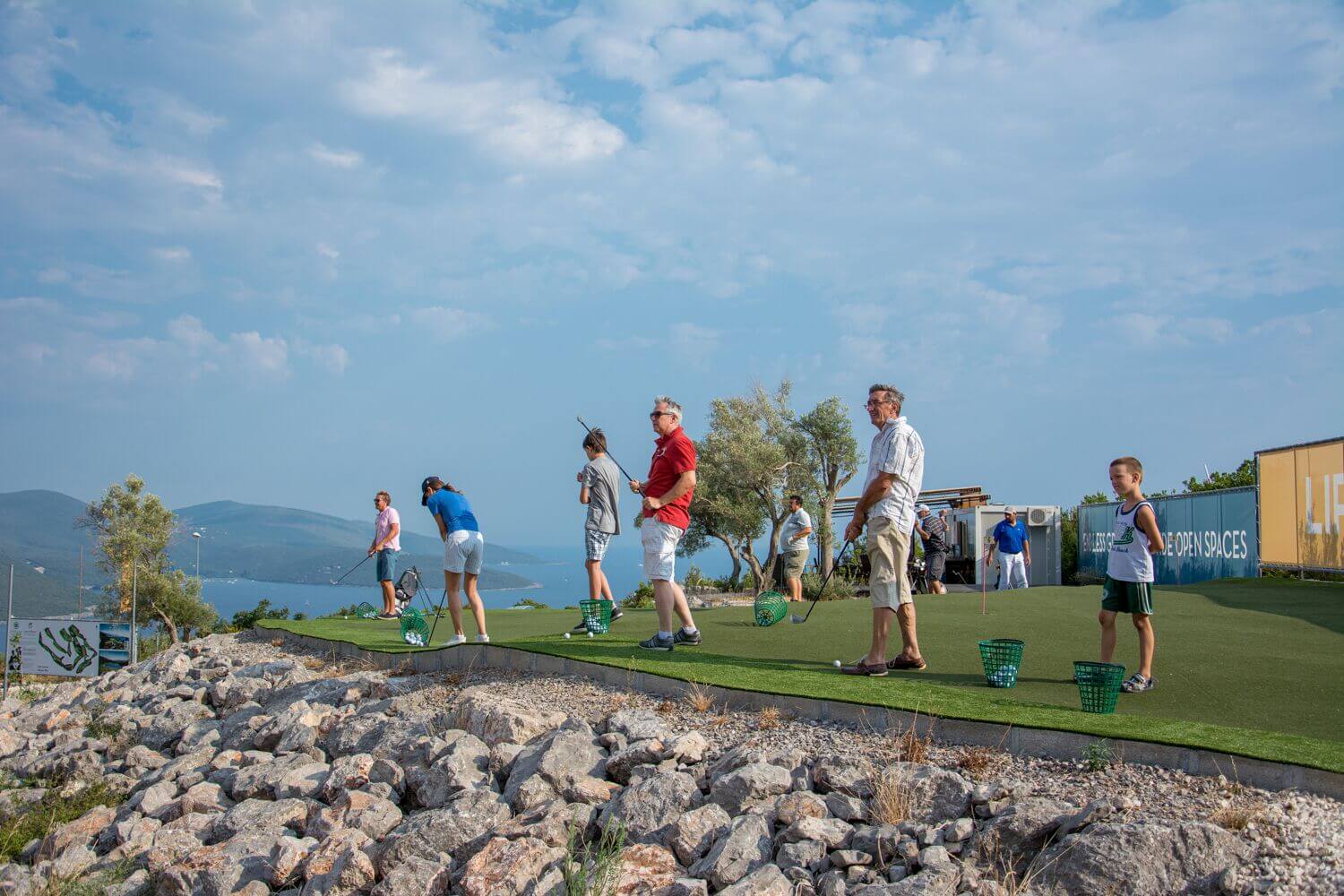
There are certainly many challenges ahead to ensure that the golf course does open on schedule (and discussions on water supply are ongoing, as I understand, for example) but almost all of the excavation and preparatory work has been done. But Player is clearly excited - here he is talking about whether or not the Lustica Bay development is a typical project for him:
Not at all. The course has dramatic elevation changes throughout the layout. The topography is quite steep so the shaping and contouring will be very bold and dynamic with stepped fairways, small cavernous bunkers, and small putting surfaces that will nestle into the steep topography.
We are going to manufacture our own capping sand from the excavated rock by crushing it to the appropriate specification and all the irrigation water will be treated effluent from the nearby town.
The driving range will be open this summer, and the first nine holes next. You can learn more about the Lustica Bay golf facility and keep pace with progress.
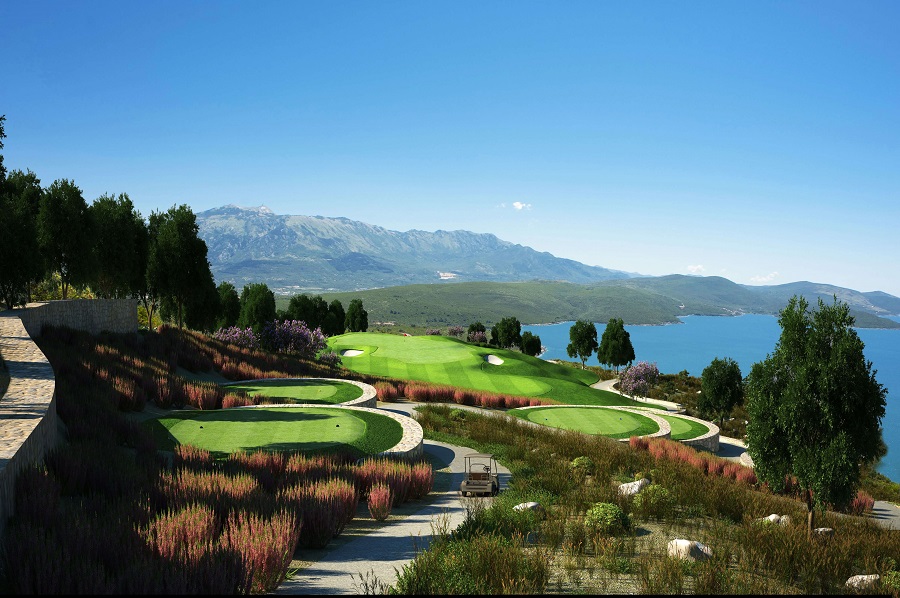
Meanwhile in Croatia...
There are just three golf courses in Croatia, one of which opened in 2009, another in 2004, and the one on Brijuni which dates back to Tito's times. Perhaps so few golf courses is a good thing - as I said, this article is not about golf.
But if the strategy is not to develop Croatia as a golf destination (a very successful strategy so far) then stop putting golf at the heart of tourism strategy. And if the plan is to develop golf as a tourism strategy, what on earth has the ministry and its team been doing for the last six years, and longer?

(Bay of Kotor, Montenegro - Photo credit Marko Stefanek)
Montenegro is not perfect, far from it, but the closer one looks, the more impressive it becomes. And while detractors will talk of the alleged corruption in Montenegro compared to Croatia, let's not forget why Porto Montenegro (and other projects) are not in Croatia. And when compared to Croatia's innovative strategy of 6 years with golf at the heart of what they are trying to achieve, with a result so far only of a 500-million-euro lawsuit, I don't think Montenegro is doing too badly by comparison.
Do you?
Business Insider: Montenegro not Croatia the 2019 Billionaire Adriatic Destination
March 18, 2019 - Another endorsement of Montenegro as an emerging luxury tourism destination from Business Insider. Meanwhile in Croatia...
One of the things I love about running the Total Project over three countries (Croatia, Montenegro and Slovenia) is the opportunity to meet with a variety of amazing people from all walks of life, as well as the chance to compare and contrast. and move beyond the stereotypes that I, along with many others, have embedded within us.
Until recently, for example, it was the perceived wisdom that Croatia was a much more attractive destination for luxury tourism than Montenegro. Montenegro, so the stereotype went, was a corrupt country and a Russian playground. When I started posting that my observations were in fact that Montenegro was moving ahead of Croatia in terms of luxury tourism, the topic seemed to touch a raw nerve with some of my Croatian friends and readers. This brought on that very familiar Croatian reaction when criticism comes their way - the policy of deflection. Normally the policy is to attack my Britishness (which is fair enough - as if we hadn't caused enough crap in the past, Brexit is pushing us into the world's biggest joke...), but any suggestion that Montenegro is somehow doing better than Croatia is explained by one word.
Corruption.
I always laugh at this argument, the only time you ever hear Croats talking about other countries being more corrupt than their own. The reality of course, is that this is the Balkans baby, and of course Montenegro, as with other countries in the region, has its major issues in this regard. But the difference on this issue between Croatia and Montenegro was nicely summed up by a Russian billionaire investor to an acquaintance of mine:
"There is corruption in every country in the region here. The only difference in Croatia is that you pay the politician and nothing happens, so four years later, you have to pay again. And nothing happens."
I digress.
A year ago, I made my first visit to Montenegro in years, and I was stunned. I knew all about Porto Montenegro, of course, but what was happening at Lustica Bay was mindblowing for someone living in Croatia. A 1.1 billion euro luxury tourism investment that was actually happening. When I came home from, I wrote Lessons from Montenegro: Why Lustica Bay Will Never Happen in Croatia.
Porto Montenegro, Lustica Bay, Portonovi - the luxury developments kept on coming, and the super-rich were arriving in their superyachts. Montenegro was de facto becoming the Adriatic destination of choice for the billionaires. Meanwhile in Croatia...
I was curious to see which were the biggest tourism investments on the Croatian coast. Thinking our heroes at the Ministry of Tourism might have some idea, I contacted them, but in the end had to do my own research. The largest ever tourism investment was Falkensteiner Punta Skala near Zadar (and very lovely it is too, and this summer will be home to The Monster, the world's largest bouncy castle), at 160 million euro in 2011, followed by Sun Gardens Dubrovnik at 150 million euro back in 2009. Nothing bigger in the intervening years in Croatia. Indeed, if you looked at the 2018 dollar value, the biggest investment ever was some $245 million, back in 1971 - Learn more on Lessons from Montenegro: Penthouse Haludovo in 1971, Croatia's Biggest Adriatic Investment.
But Croatia is preserving its coastline, say the defenders, and yes they have a point. But tell that to the many foreign investors who have spent millions buying up land they were told they can build on (and may well in time). The coastal map of Croatia with all the planned developments in would be a very interesting one to read.
Croatia, one of the most beautiful countries in the world and a potential luxury tourism haven if ever there was one, is missing out. Having worked as an aid worker back in 1994 during the genocide, I was amazed to learn that Rwanda too is becoming a luxury tourism destination. The major luxury tourism hotel brands are opening in Kigali but not Croatia.
And so to the catalyst for this article - the Business Insider These are the 15 hottest destinations billionaires are traveling to in 2019, which was published over the weekend.
No Italy. No Greece. No Croatia. Just one entry on the Adriatic (Rwanda also made the list by the way):
Montenegro.
This wasn't a random list of countries put together, but based on
"Business Insider teamed up with boutique luxury travel agency Original Travel, which plans trips for high-net-worth individuals, to find out the hottest spots the elite are spending their money on in 2019. They based this ranking on the number of bookings and performance; the latter was assessed by feedback, their expertise, and client inquiries."
About Montenegro they said:
"Montenegro is set for a luxury upgrade in 2019 with the Chedi Lustica Bay newly opened and One & Only opening its first resort in Europe next year with Portonovi in Boka Bay," he said.
"Lesser-known than neighbors Croatia and Greece, the tiny slice of Adriatic coastline that is Montenegro has previously lacked high-quality accommodation (other than the Aman network) to rival its fjord landscapes, Tom Barber, co-founder of Original Travel, told Business Insider.
"Montenegro is set for a luxury upgrade in 2019 with the Chedi Lustica Bay newly opened and One & Only opening its first resort in Europe next year with Portonovi in Boka Bay," he said."
(Editor's note Lustica Bay last month won an award as the Best Property Development in Europe at the Luxury Network International Awards in Dubai)
About Rwanda they said:
"Rwanda was named a new African luxury destination to watch in 2018 by Luxury Travel Mag. The destination is all about nature and wildlife, home to three national parks: Akagera, Nyungwe, and the Volcanoes National Park.
"The latter is the perfect spot — and one of the few remaining places — to see mountain gorillas in the wild, according to Original Travel."
About Croatia they said:
Absolutely nothing.
But as long as Croatia keeps cramming tourists and cruise ship passengers into its old towns, the numbers will look good and the season will be a success.
If you are interested in learning more about Montenegro, follow our sister site, Total Montenegro News.
Lessons from Montenegro: Chedi Lustica Bay Opens, Meanwhile in Croatia...
The luxury Chedi Lustica Bay in Montenegro opened its doors to the world on July 21, 2018, part of a 1.1 billion euro Swiss-Egyptian tourism investment in the country, and the latest foreign investment in Montenegro. Meanwhile in Croatia...
Lessons from Montenegro: Why Luxury Lustica Bay Will Never Happen in Croatia
February 12, 2018 - As many major tourism investments in Croatia are stuck for years in paperwork, a luxury revolution is happening to the south in Montenegro. Why and how Croatia is losing a major opportunity to become the luxury destination of choice on the Adriatic.


